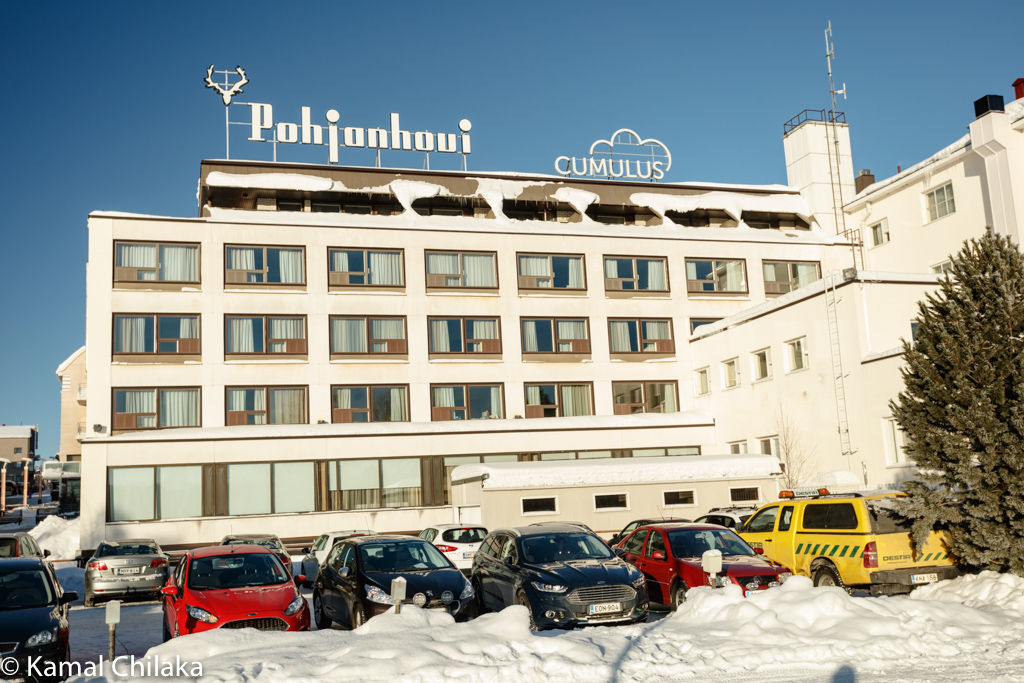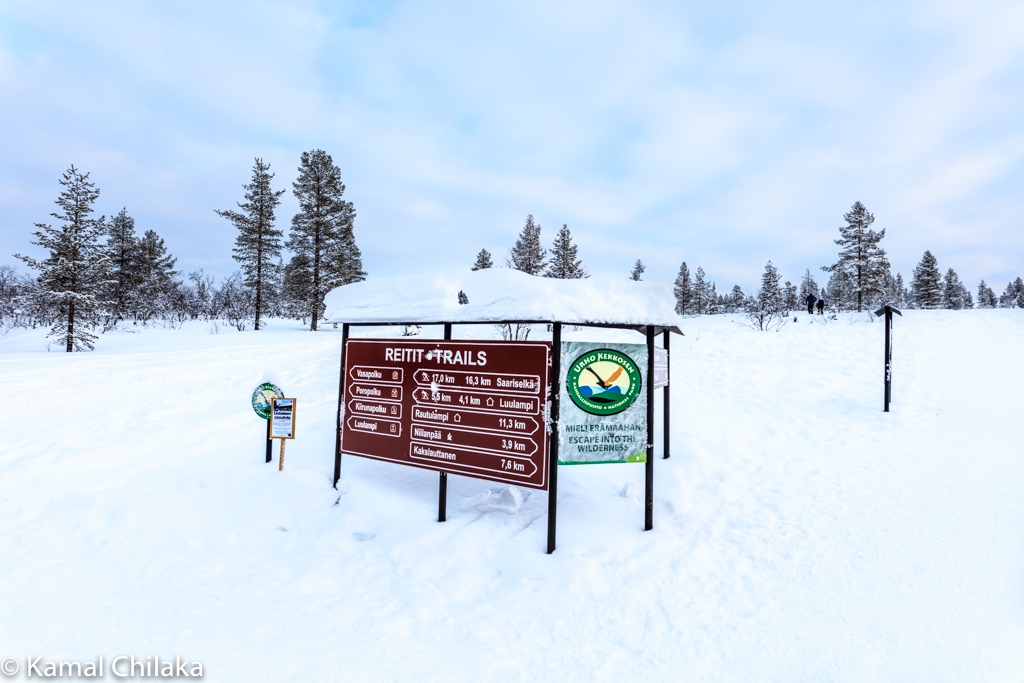My Exploratory trip to Finnish Lapland- Winter Wonderland !
February 2018 brought with it some unexpected travel plans. I think this was the quickest trip by far from Thought to Planning and actually heading there that I have experienced in a very long time. I have been wanting to do some true white winter photography for a while now and being situated in India and Singapore you can see how that can be a challenge.
February 2018 brought with it some unexpected travel plans. I think this was the quickest trip by far from thought to planning and actually heading there that I have experienced in a very long time. I have been wanting to do some true white winter photography for a while now and being situated in India and Singapore you can see how that can be a challenge.
But this year all that changed as a chain of events resulted in my ending up in Finnish Lapland near the Arctic Circle. So what follows is a Photo Essay/Travel Tip/Photography Learnings from that trip.
Why Lapland?
Having shot primarily during spring and fall for the past several years I was nagged by a desire capture photographs of a proper white winter.
I had been putting off winter photography for all the usual reasons. Having lived most of my life in the hot tropical conditions of South India and also having experienced the biting cold winters of North Eastern US for a few years I have generally been comfortable planning my Landscape and Travel shoots during the shoulder seasons of Spring and Fall.
And I have hundreds of images from those shoots. But what was starkly missing from my portfolio was winter photos.
Getting There
From Singapore
Finnair has direct connections from Singapore to Helsinki. From Helsinki fly to Rovaniemi which is the main gateway to Finnish Lapland.
From India
Finnair flies from Mumbai and New Delhi to Helsinki from where you can connect to Rovaniemi.
Other Notable Airports in Lapland are Ivalo and Kittila but I strongly suggest heading to Ravaniemi first getting your winter bearings there in the comfort of a relatively larger town with load of facilities and Tour Operators before heading in to the more remote areas.
Watch this Video for more Information on how I planned for my trip.
When to Go to Experience Winter in Lapland
December to March is winter period at Lapland.
Typical Temperatures in winter
December: -20 to -10 degrees Celsius
January: -30 to -15 degrees Celsius
February: -20 to -15 degrees Celsius
March: -15 to -5 degrees Celsius
Clothing
At these low temperatures its very important to stay warm . Wear Layers and Choose good quality lightweight synthetic fibres or wool. Stay away from cotton while choosing clothing for this trip.
During my trip the coldest temperature was -29C and on average it was in the -15C range. I wore 3 layers regularly starting with thermals and then insulated pants and woollen sweaters or fleece and the final layer being a heavy insulated jacket and snow pants.
For footwear I wore sock liners and thick wooden socks and my mid height hiking boots which did a decent job of keeping me warm. And to protect my head and face I had a balaclava over which a I wore thick woolen Beanie and UV goggles to protect my face.
I used photography gloves with openable tips for index finger and thumbs on both hands to keep me warm but also make it easier to operate the camera controls.
My Favourite Outdoor Wear Brands
For Clothing : White Sierra, Patagonia, Arcteryx, Marmot, Mammut
Winter Gear
2. Snow Pants
3. Base Layers
What was in my camera Bags?
As photographers we are ofter conflicted with what to take and what to leave behind just in case and this time was no different. I think I carried a little more than I should have but here is the list of equipment I carried for the trip. I took with me the Canon 5D IV and Canon 5DS-R Camera bodies. These are now available at a discount now and are still very good options. But technology has marched on and there are several great high resolution cameras with better dynamic range available now.
Suggested Cameras Updated for 2021
From Canon
Canon EOS R6 Full-Frame Mirrorless Camera with 4K Video
Canon RF 70-200mm f/2.8L is USM Lens
Canon RF 24-105 mm F/4 l is USM Lens
From L Mount Alliance
Panasonic Lumix S DC-S1M, Full Frame Camera with 24-105 Lens kit
Leica SL2 47MP Mirrorless Full-Frame Camera (Body Only)
Leica Vario-Elmarit-SL 24-90mm f/2.8-4 ASPH. Lens
From Fujifilm Medium Format
Fujifilm GFX 100S Body - Black
Fujinon GF32-64mmF4 R LM WR Lens
From Sony
Sony - FE 16-35mm F2.8 GM Wide-Angle Zoom Lens
Sigma 592965 28-70mm F2.8 DG DN for E mount
In hindsight I think the 55mm Otus and the 100mm Macro were overkill and weren't used all that much. The Lens that I enjoyed shooting the most with were the Sigma 20mm f1.4 and the Canon 70-200 f2.8 followed by the Canon wide angle zoom.
Accessories
Mindshift Gear- Backlight 26L Backpack , Think Tank Airport Stroller Bag
Gitzo Mountainer Tripod and Arca Swiss Z1 ball head
Rugged Torchlight
San Disk Extreme and Lexar CF Cards and SD cards
Lacie Rugged External Hard Drive and San Disk SSD Drives for backing up images
Macbook Pro and iPad Pro which were a bit redundant next trip I wil carry just one of these.
(I Lost my B1 Ball head while using the ski lift to to the top of kaunispa and now need to replace that. Hazards of travel photography !)
My Itinerary
My Journey started in Singapore from where I flew on British Airways to Helsinki Via Heathrow . From Helsinki I took a connecting flight to Rovaniemi the gateway town to Finnish Lapland . Rovaniemi has two unique qualities. 1 the Arctic Circle actually runs through it. 2 It is home to Santa’s Village and Santa’s post office.
After landing at Rovaniemi Airport and collecting my baggage I quickly donned enough protective clothing to withstand the short walk from the terminal door to the free bus into the city. I was dropped off at the entrance to my hotel the Cumulus Hotel Pohjanhovi which I had booked through Booking.com and was soon checked in and up in my room with was spacious and warm.
Rovaniemi the gateway to Lapland
Rovaniemi is a nice town for starting your journey into Lapland. If you have never experienced a Nordic winter before its good to get acclimatised here and get your winter bearings. Rovaniemi has a number of good tour and safari operators who can help you with a number of Lapland activities such as trips to Reindeer Sleigh rides and farm visits, husky tours, snowmobiling, snowshoeing and even night safaris to watch the northern lights.
If you are traveling with family and young children a trip to the Santa Claus Village and and Santas post office would be a good place to start.
I was looking forward to spend time photographing the nature winter walks in and around the city.
Having slept well during my long haul flight after a brief rest at the hotel I was into my winter clothing and out with my camera doing a recon of the area around the hotel which was located on the banks of the Kemijoki River. The River was mostly frozen over and a blanket of snow had covered the frozen river. I could spot people river fishing through holes in the ice and I also watched a group of snow mobiles returning from a safari which was quite fascinating to watch as they drove across the frozen river led by an expert .
It was golden hour as I was exploring the river bank and was able to capture a couple of nice images.
I started to feel cold as the sun dipped below the horizon and decided to head back to the hotel and get myself a warm drink and some dinner before retiring for the night. I ensure I had all my batteries charges and memory cards loaded and gear ready for my first full day of shooting at the Arctic Circle.
Day 1-Day 4 Rovaniemi
Where to Stay at Rovaniemi
Rovaniemi Offers a number of hotels and Apartments to stay at but winter is a very busy time specially during Christmas and accommodations can get fully booked a month or more in advance so book early.
I stayed at the Cumulus Hotel Pohjanhovi due to its location close to the river and also the rating and reviews from users. it turned out to be a good choice. The rooms were of a reasonable size and nice and warm which was a welcome relief after walking around in the cold for 5-6 hours a day.
But there area number of cottages and bed and breakfasts also available but can have little or no services and located remotely which will then require your to rent a car.
I managed without renting a car the entire trip as I was hesitant to drive in the icy winter conditions there. But I must mention the roads were all well maintained and clear and traffic was moving along well on the highways.
A few hotels which I found interesting during my search
Hotels at Rovaniemi with good reviews
Mid Range
Luxury
Video about my experiences exploring the Banks for the River Kemijoki
Exploring the Bridges Walk
The 2 Bridges Walk is a picturesque walk along the banks of the Kemijoki River with crossings over the two bridges namely the Jätkänkynttilä, or Lumberjack Candle Bridge and the Old Railway Bridge.
You can also do the 4 Bridges walk is a longer loop covering all 4 bridges which totally about 8 km long. But I decided to just stick to the shorter walk as it was just oo cold to stay out for so long.
The walk offers great views of the Lumberjack candle bridge and frozen kemijoki and ounasjoki rivers.
You can spot people walking across the frozen river and also there area few outdoor saunas along the banks where you can take a dip in the icy waters and then get into a hot water tub.
The light keeps changing continually from sunrise to sunset and you are presented with so many different options of photos.
I specially liked exploring various compositions of the line of frost covered trees along the banks. I also enjoyed capturing small details and contrasts of plants and objects sticking out from the otherwise pure white snow.
Video of my experiences Photographing at Ounasvaara Winter Trail and Ranua Wildlife Park
Image Gallery from Ounasvaara Winter Trail and Ranua Wildlife Park, Lapland, Finland.
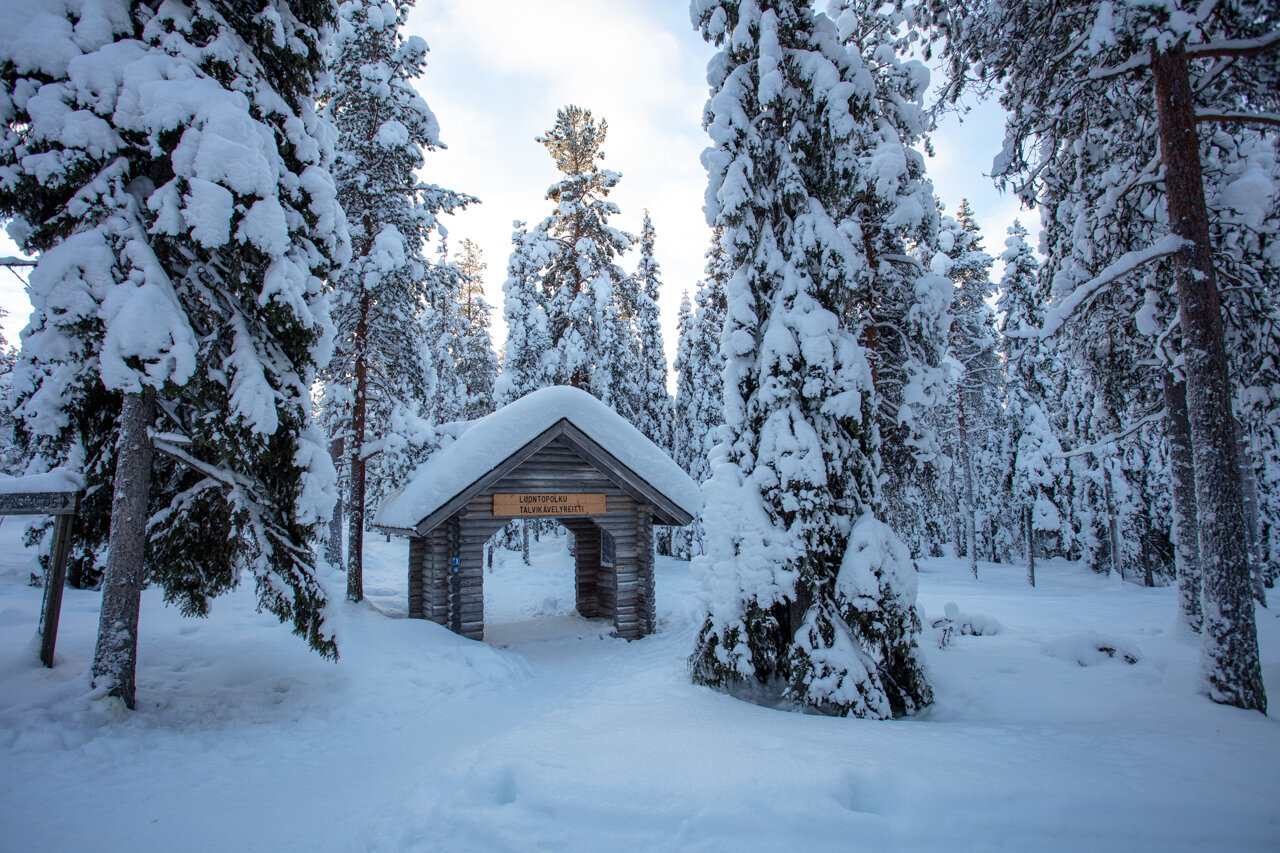
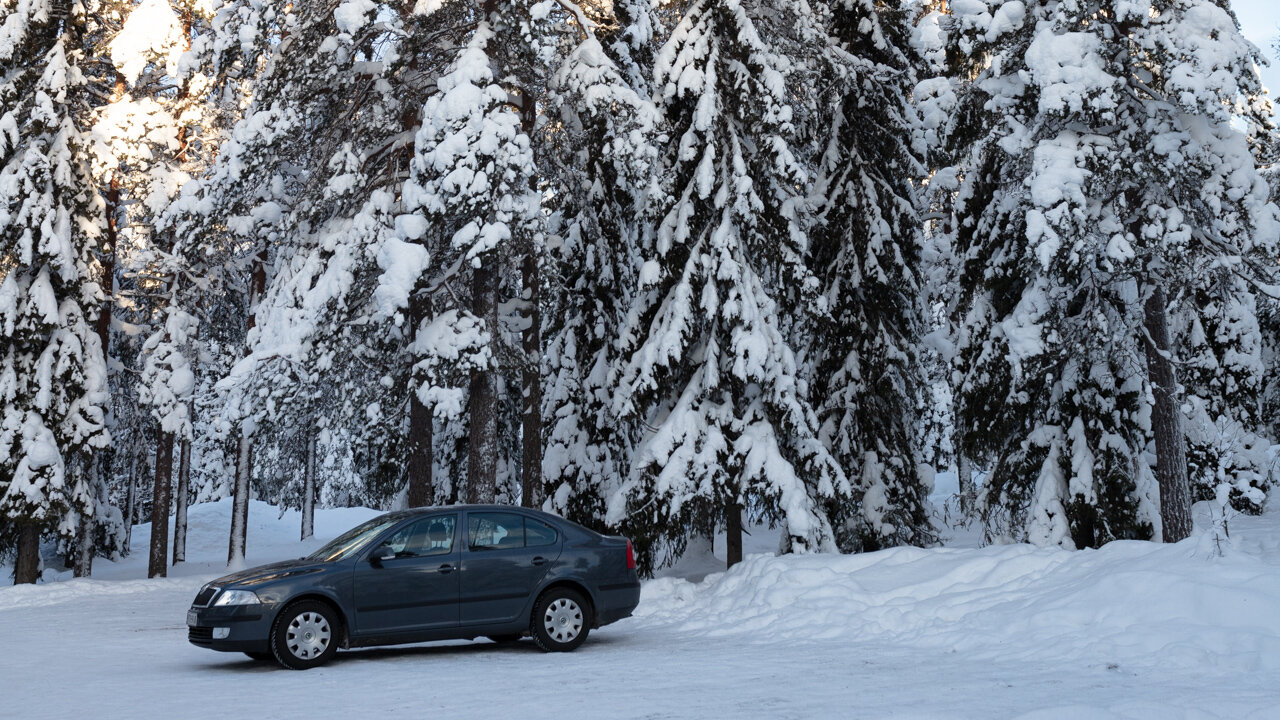
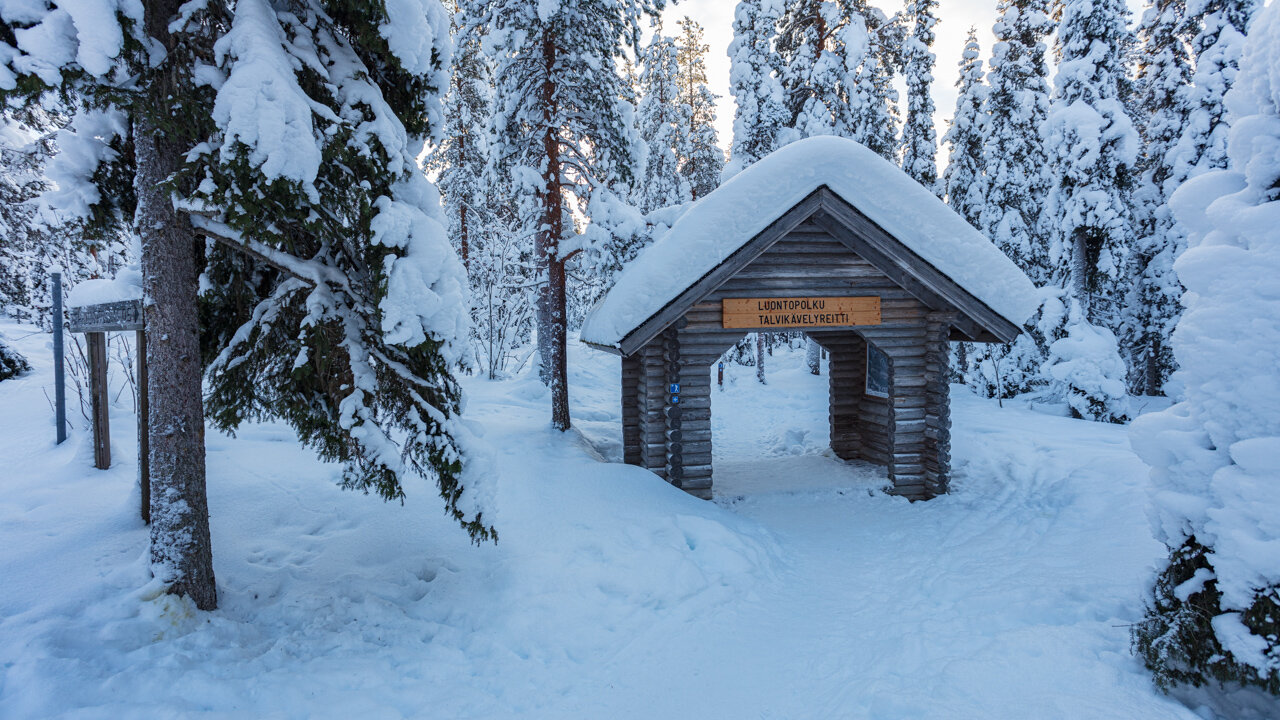
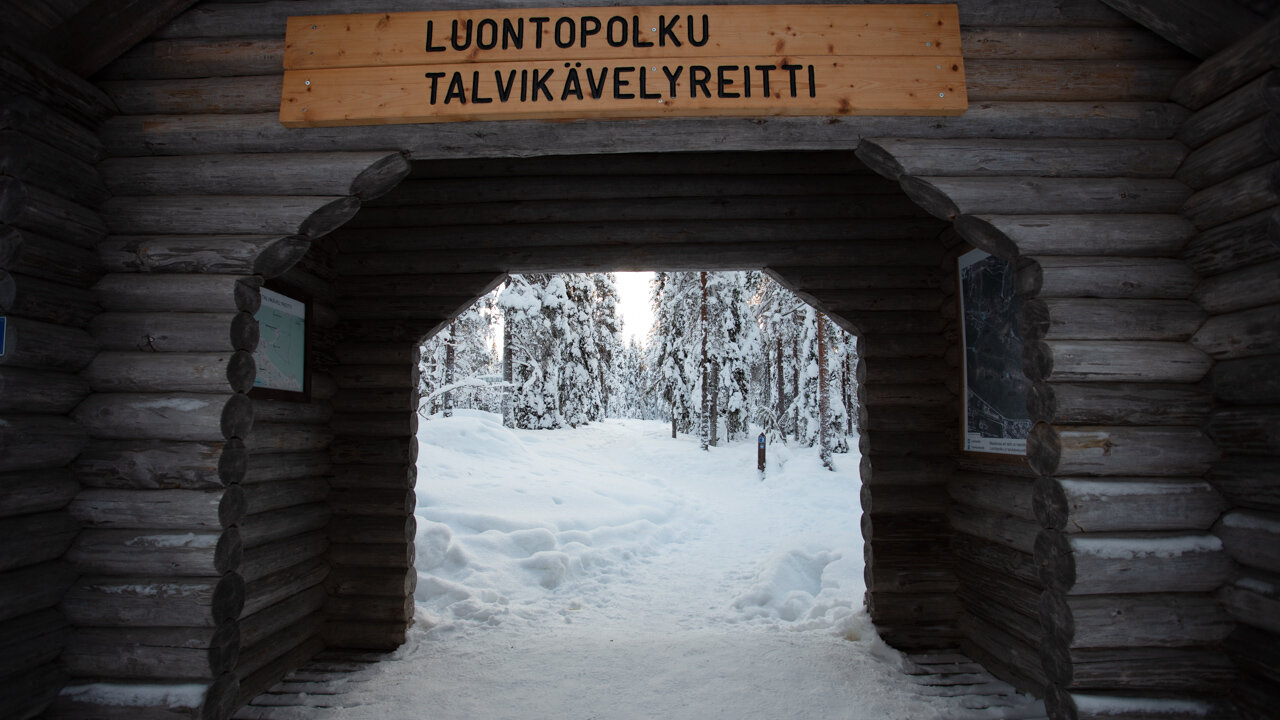

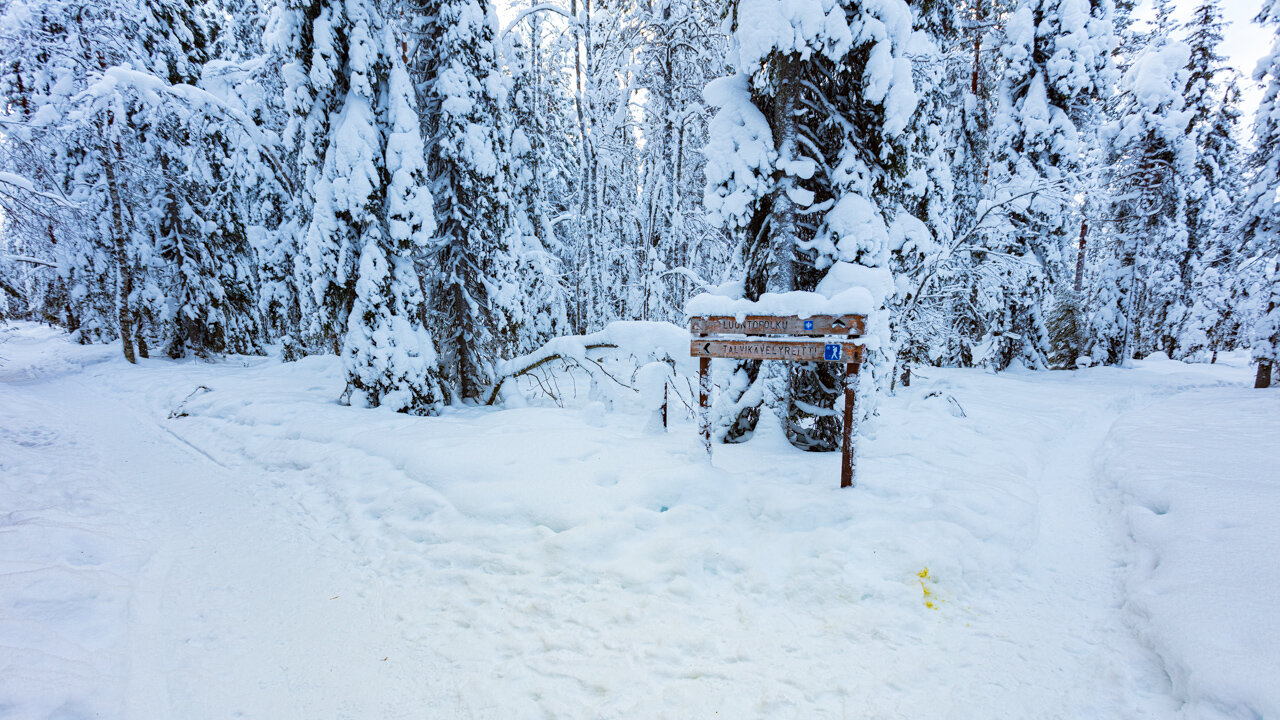
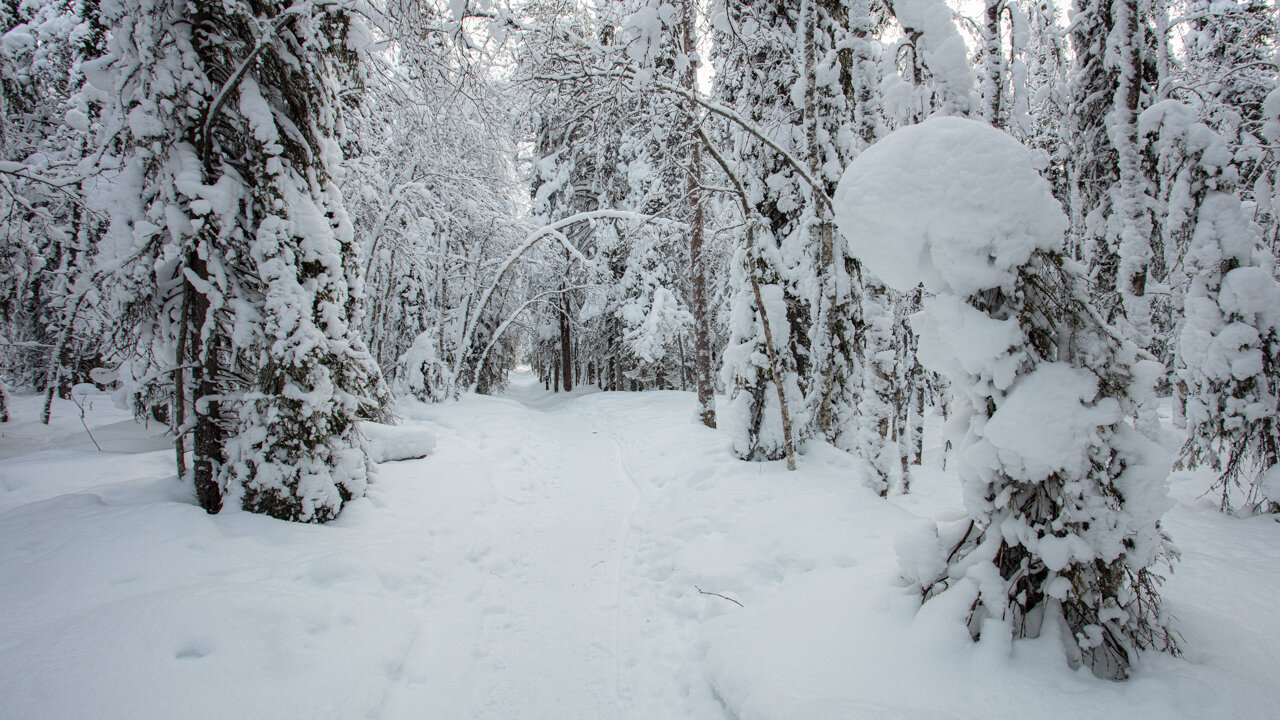
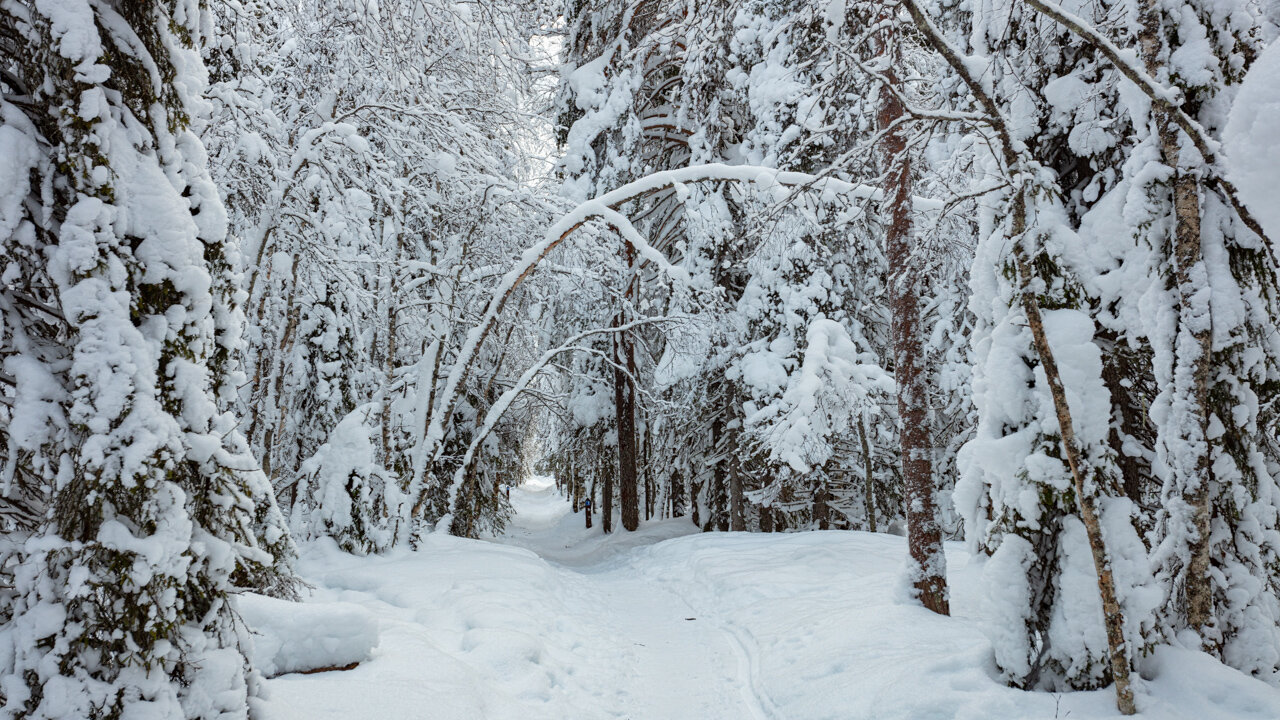
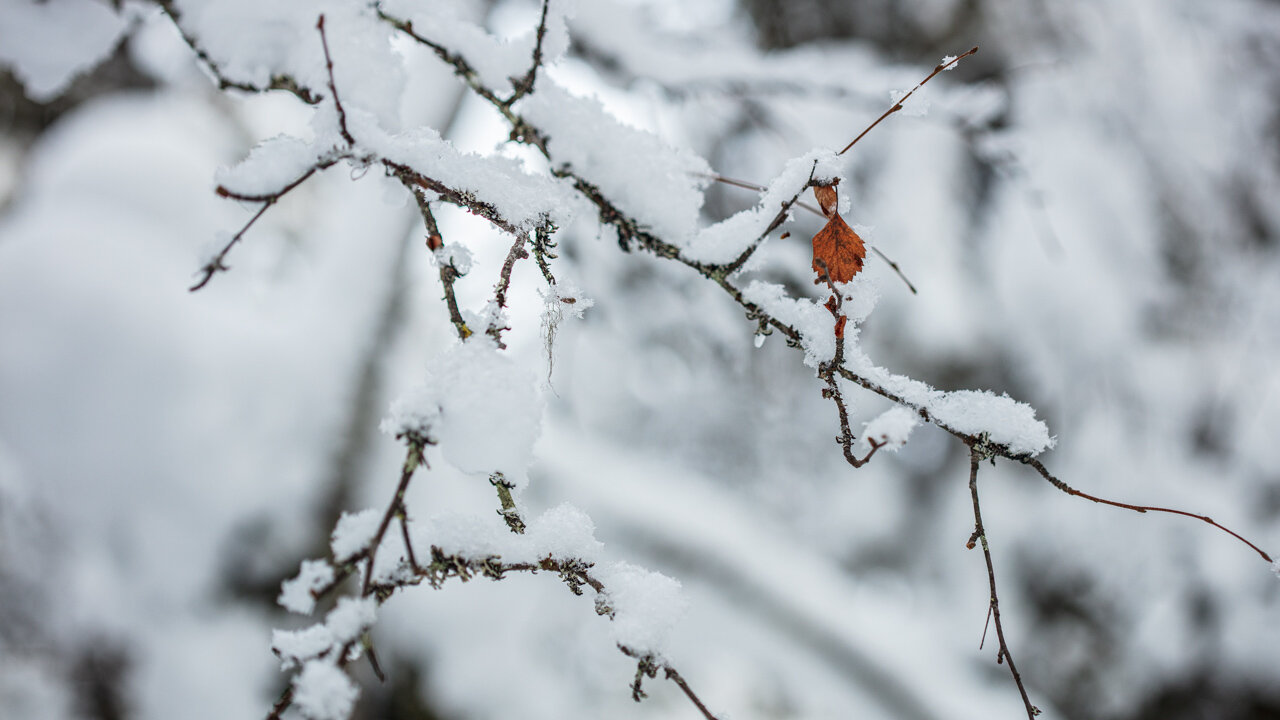
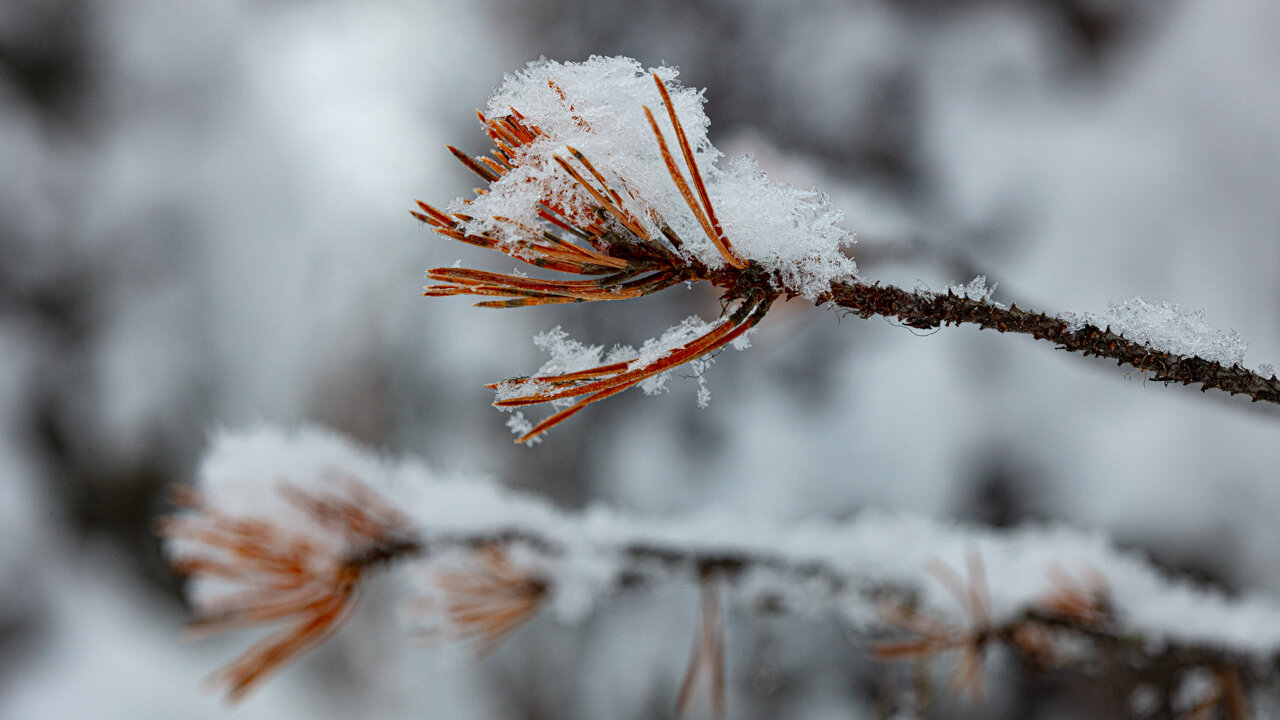
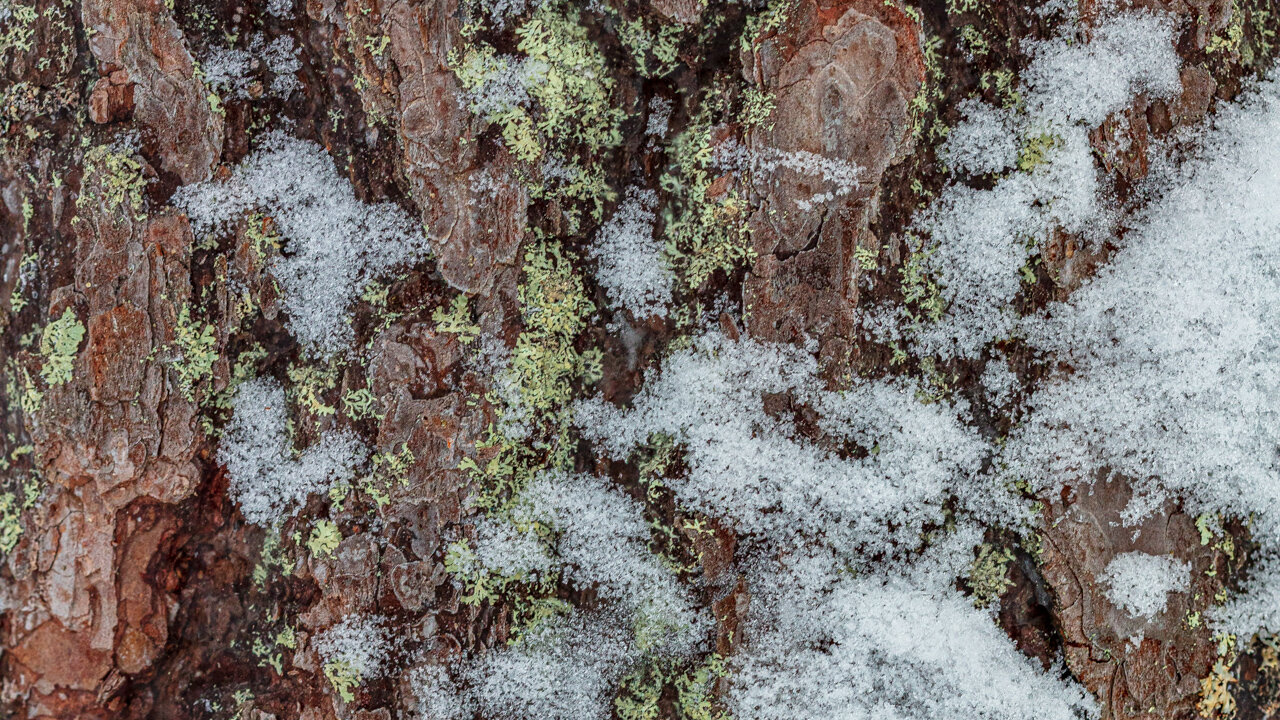
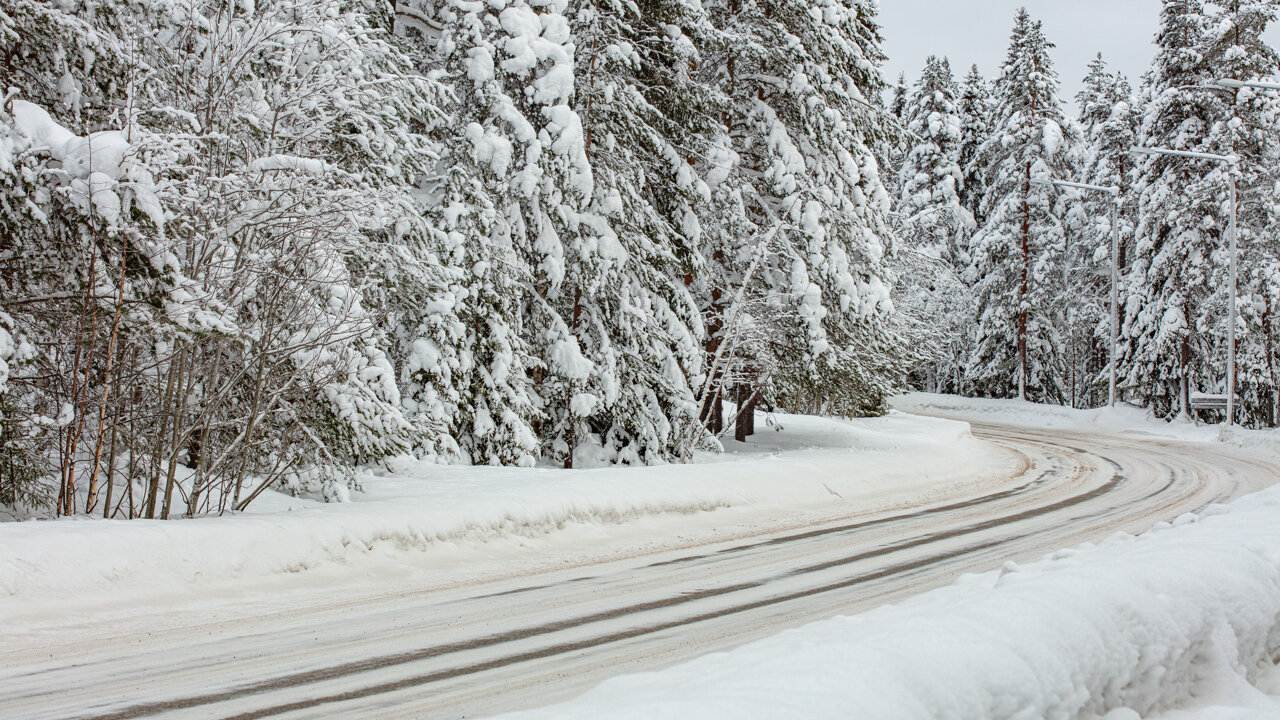
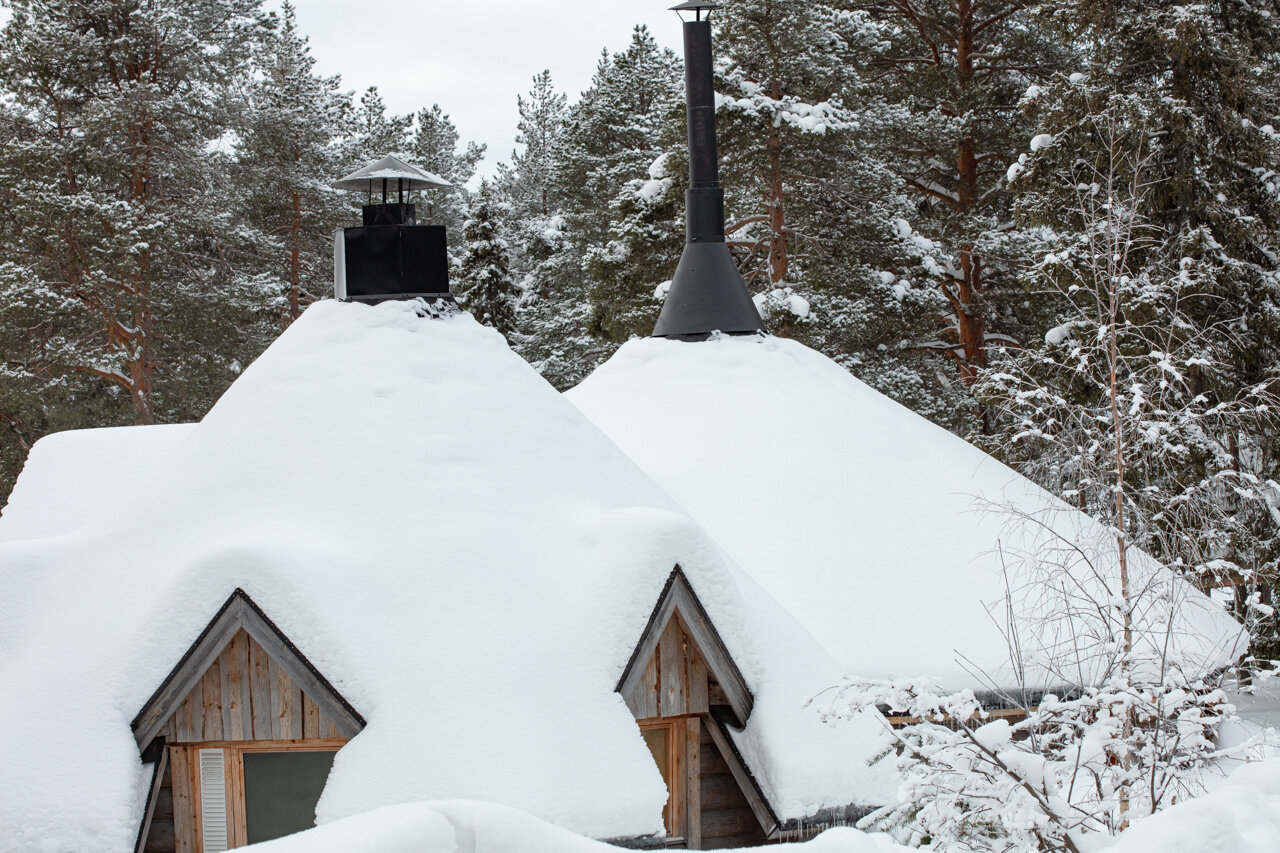
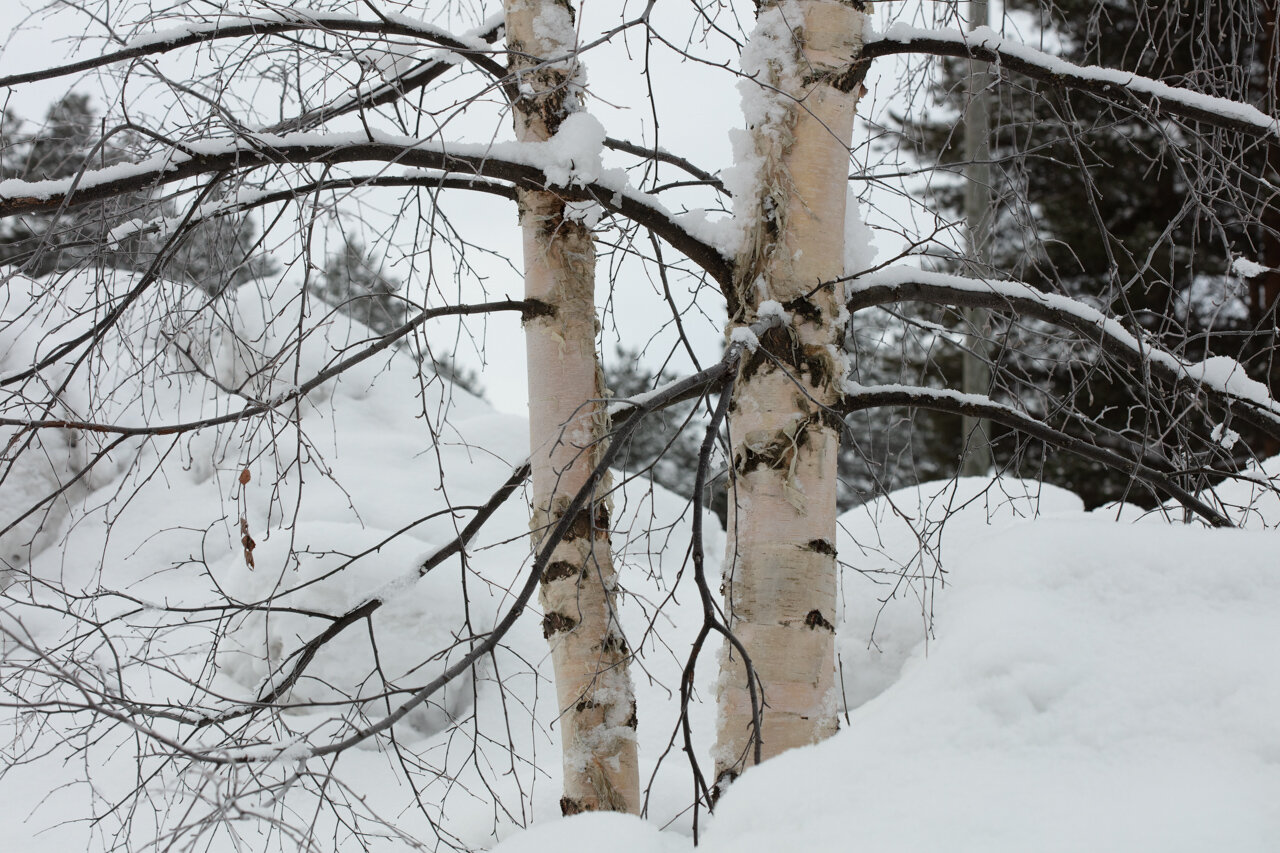
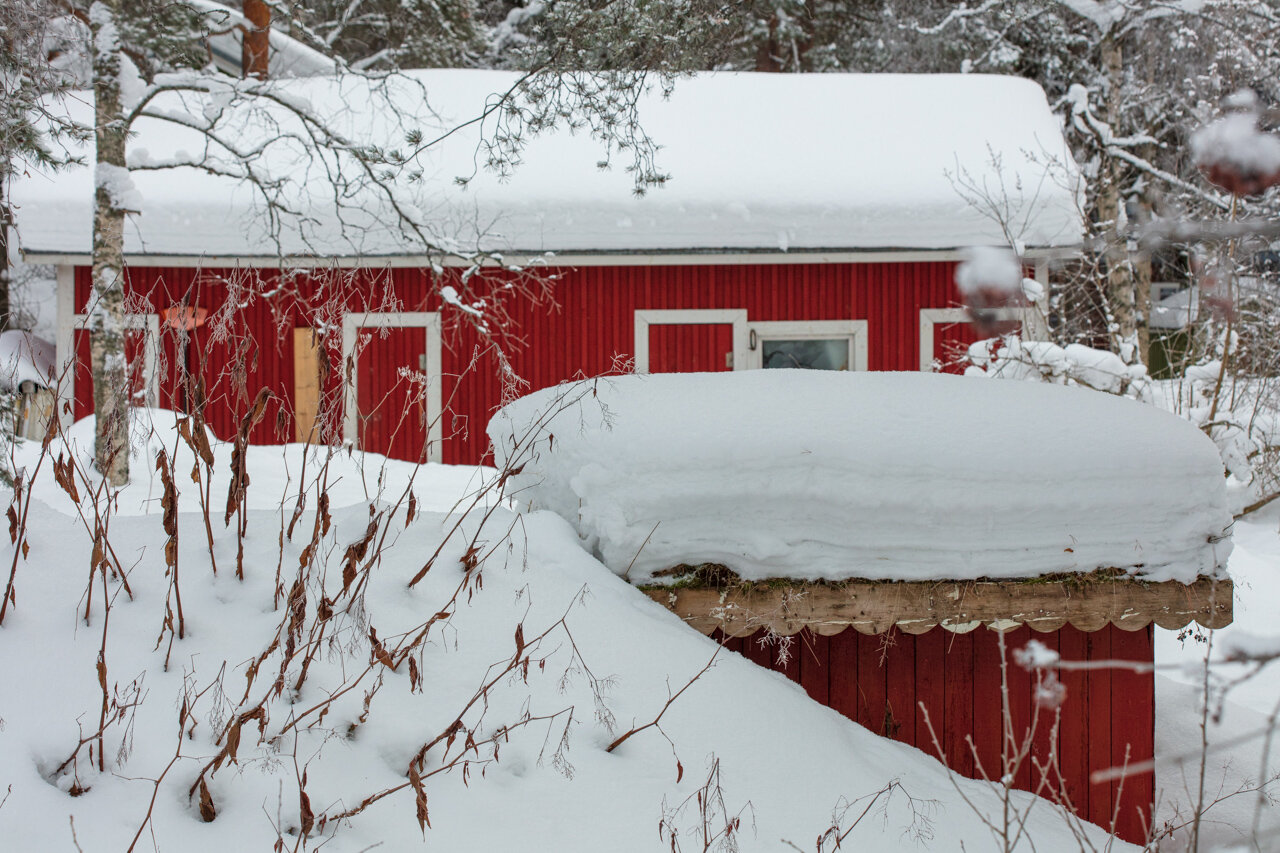
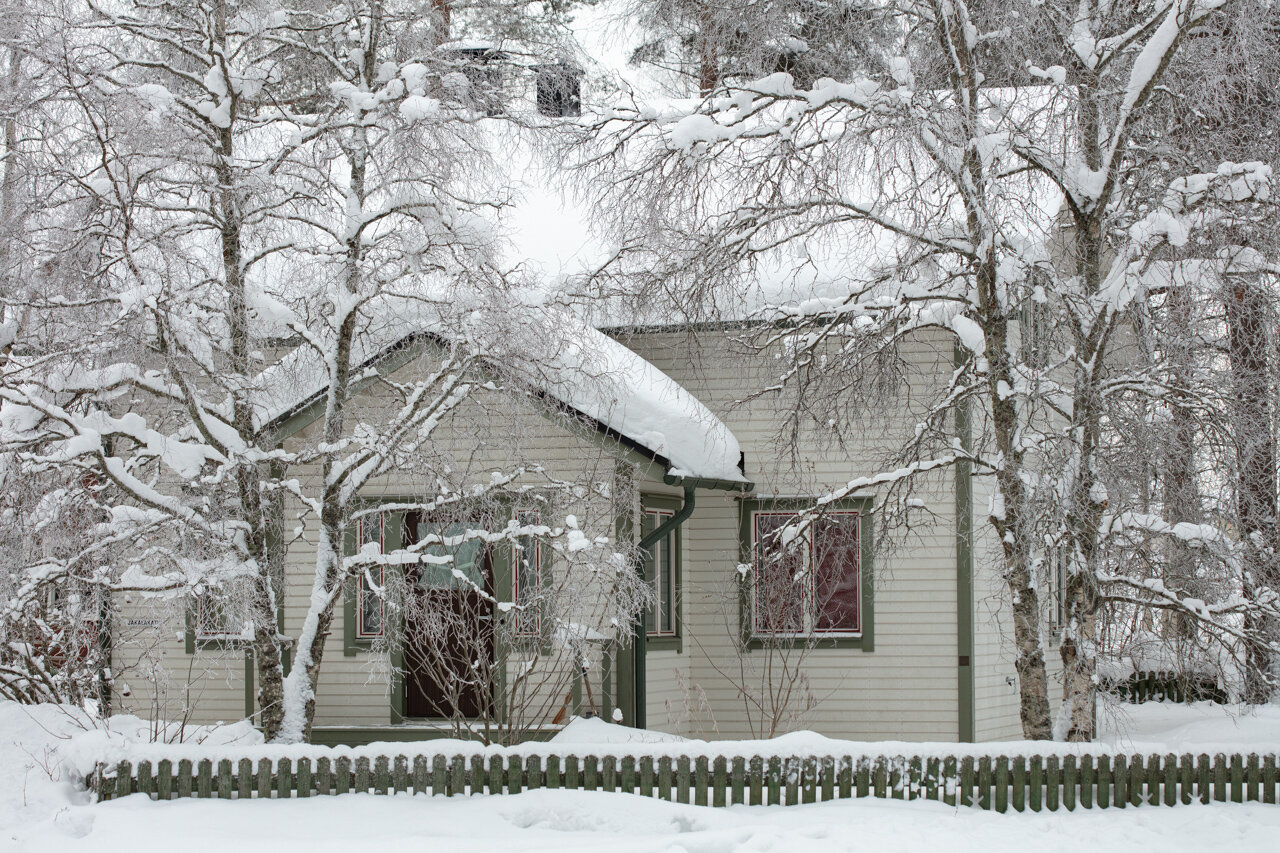
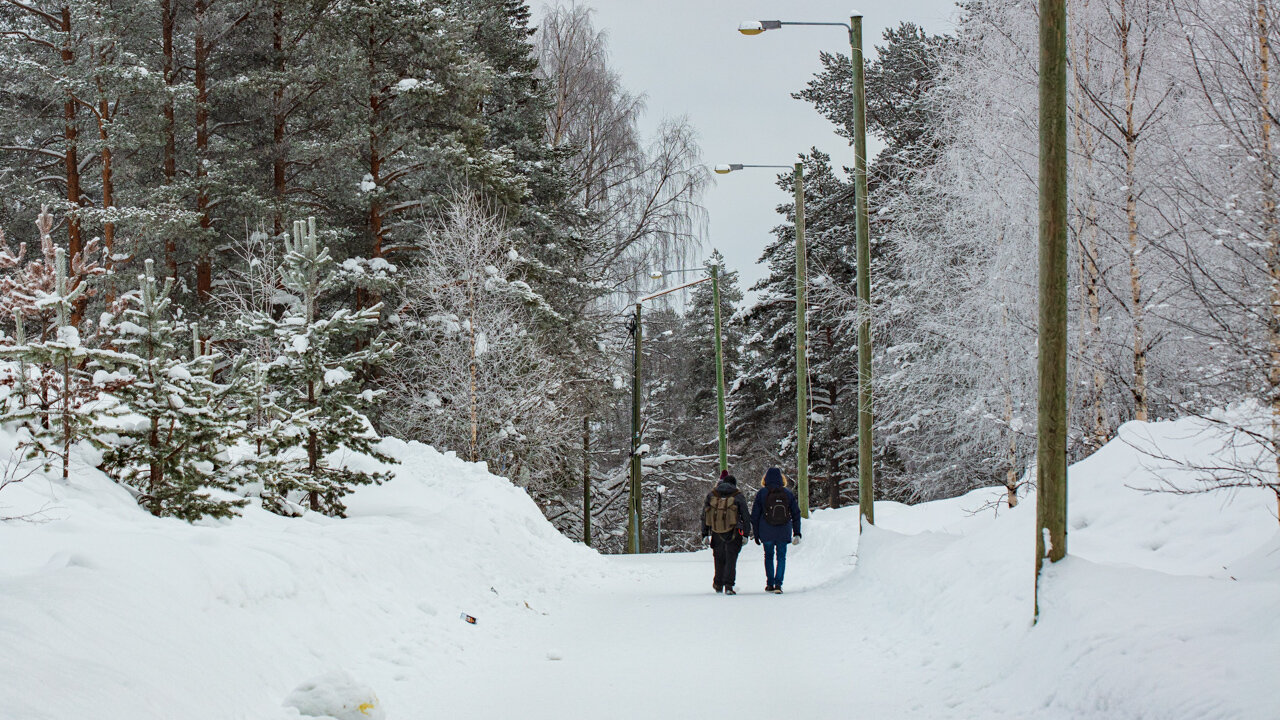
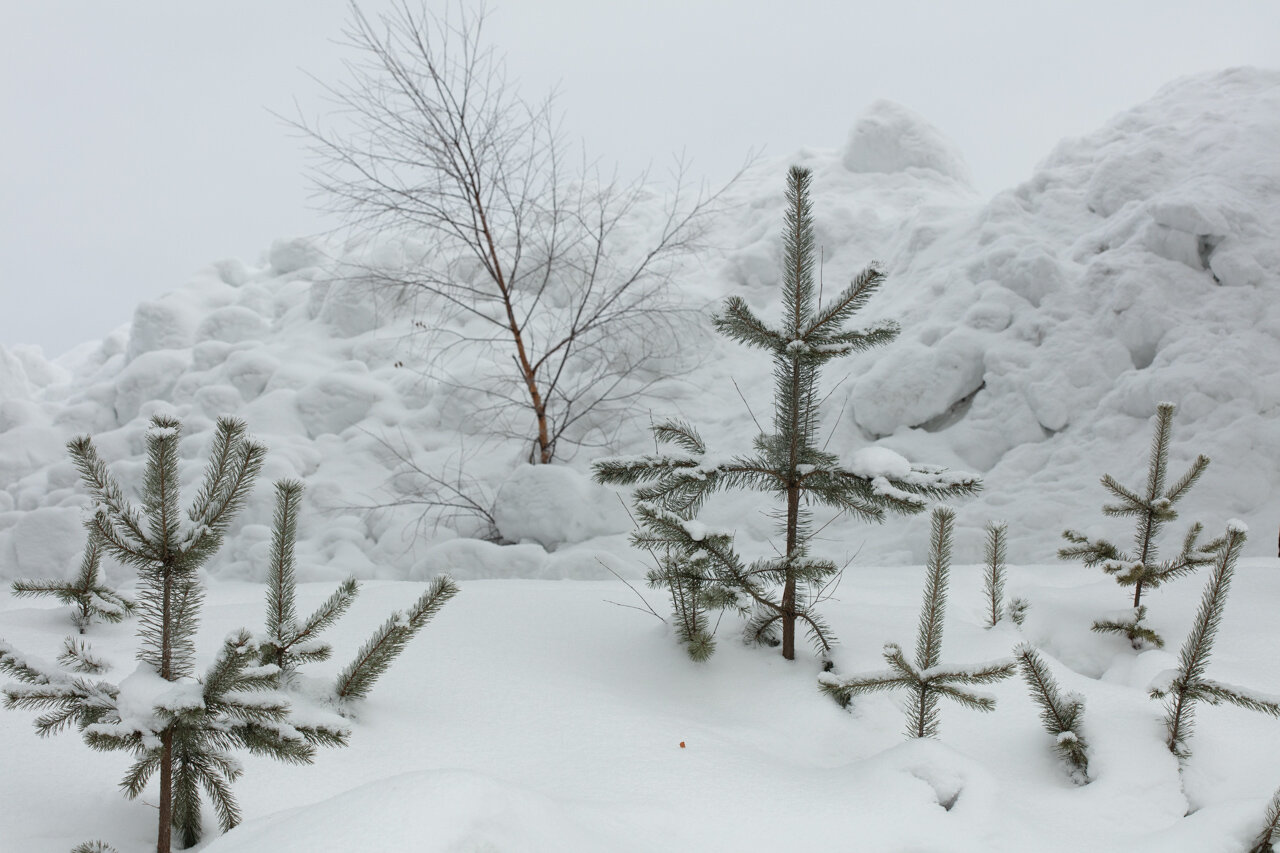
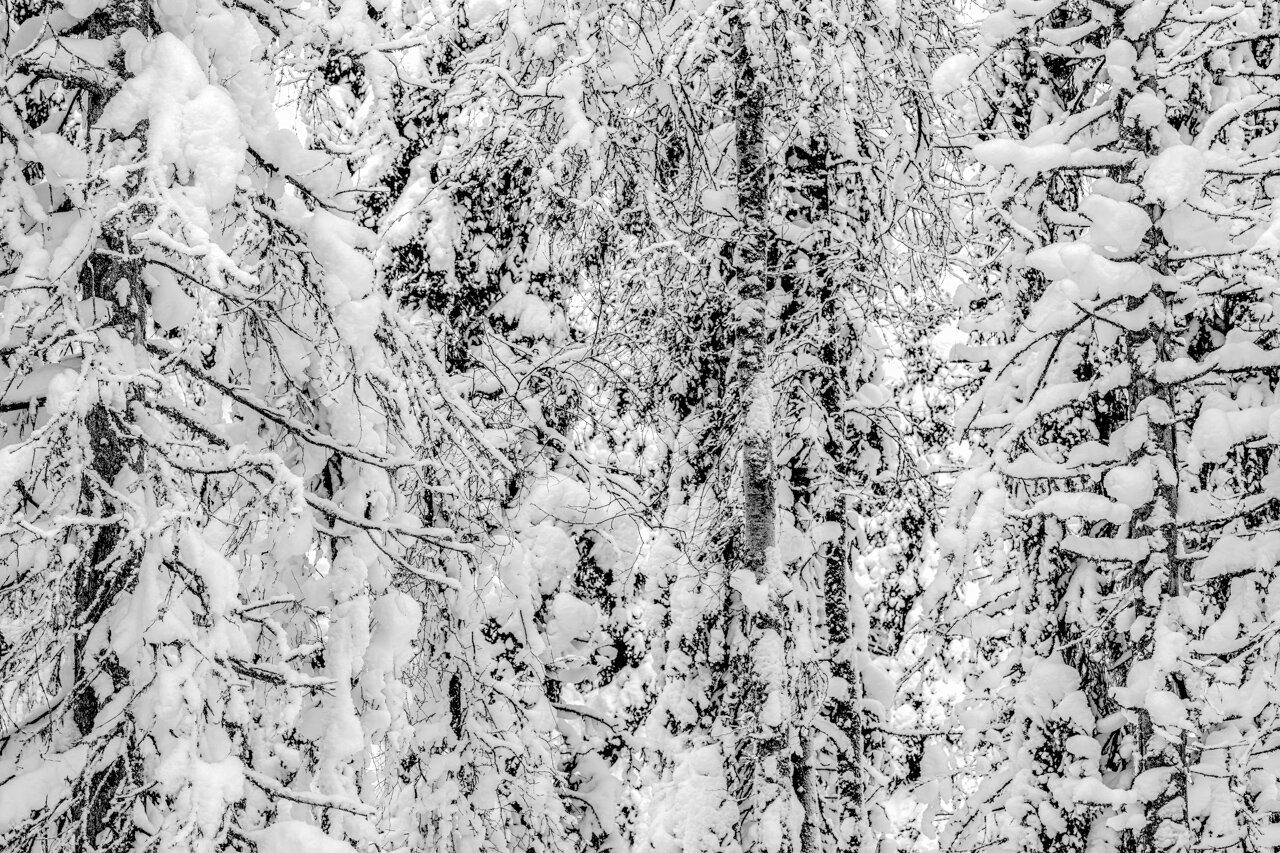
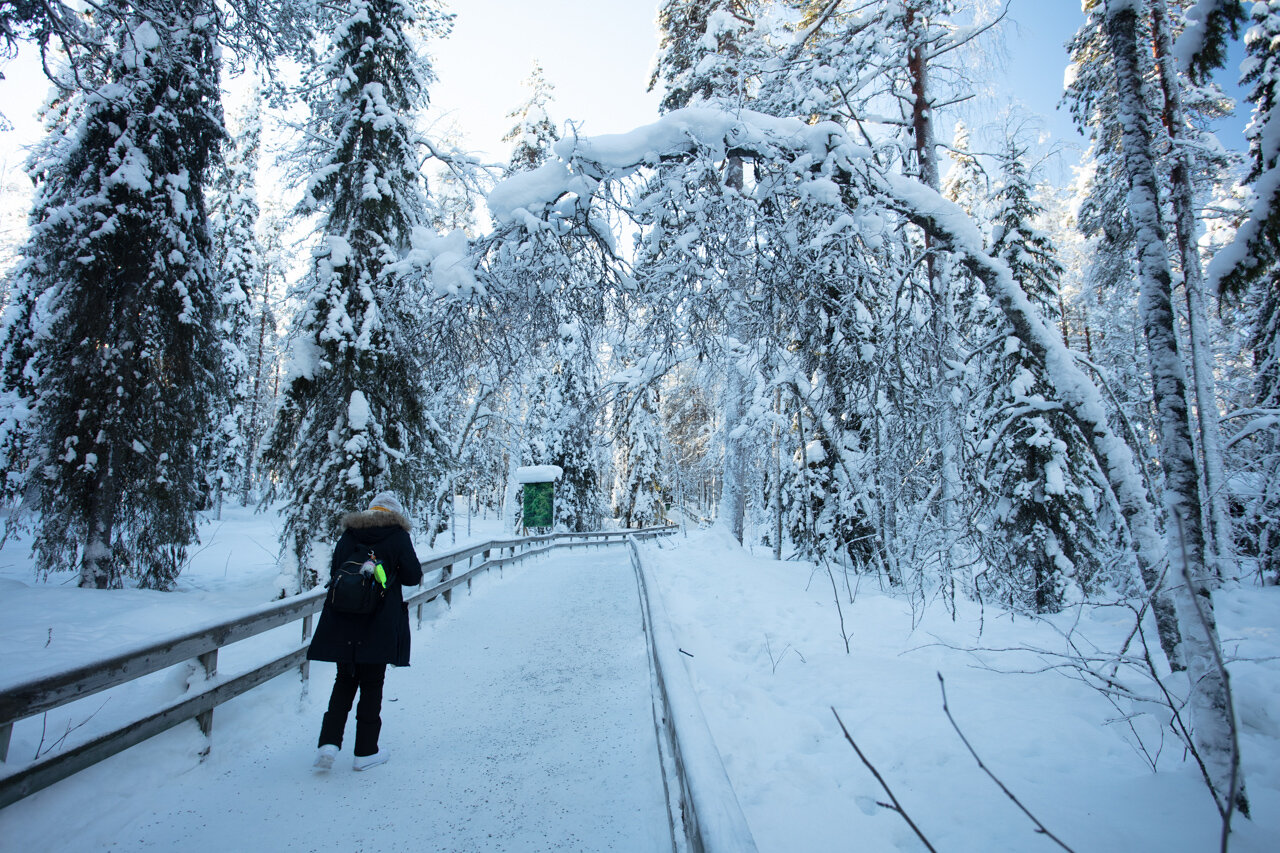

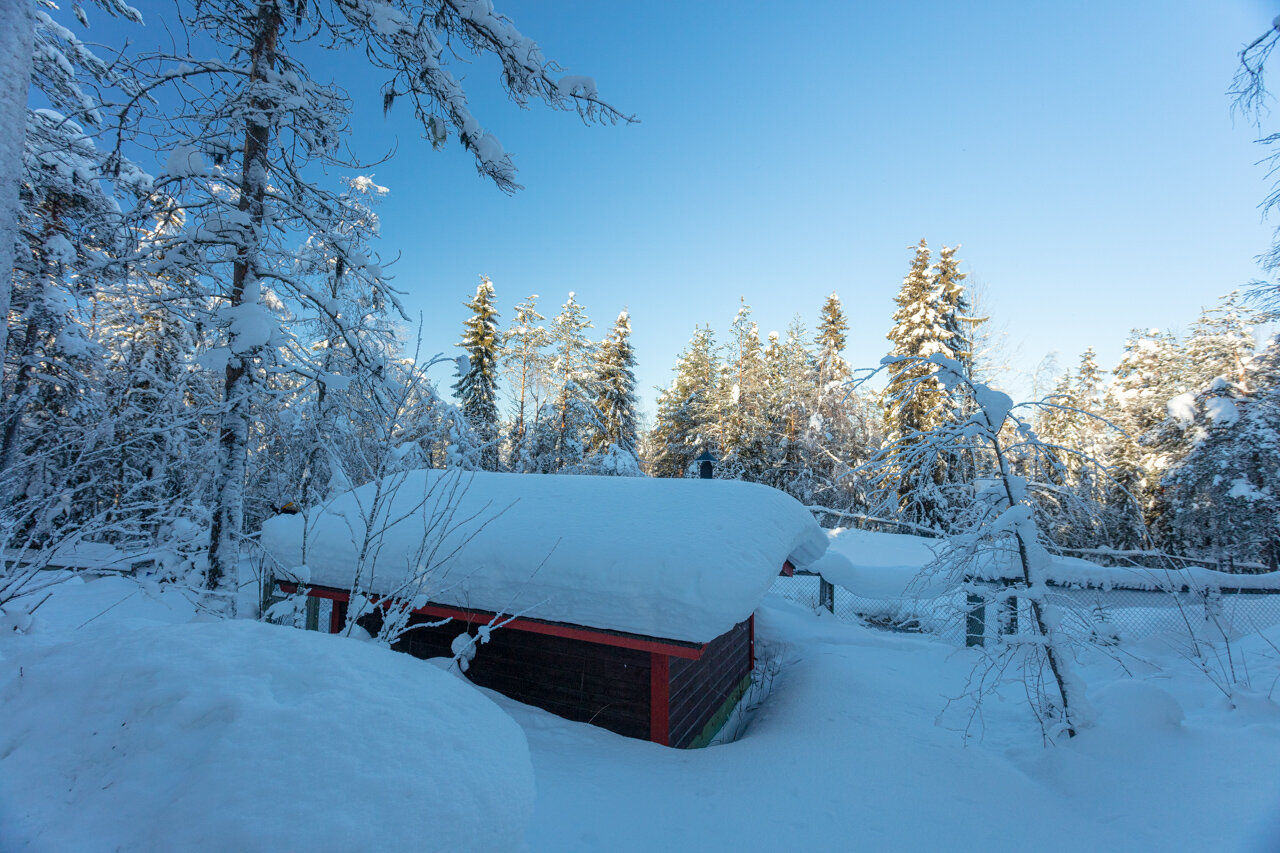
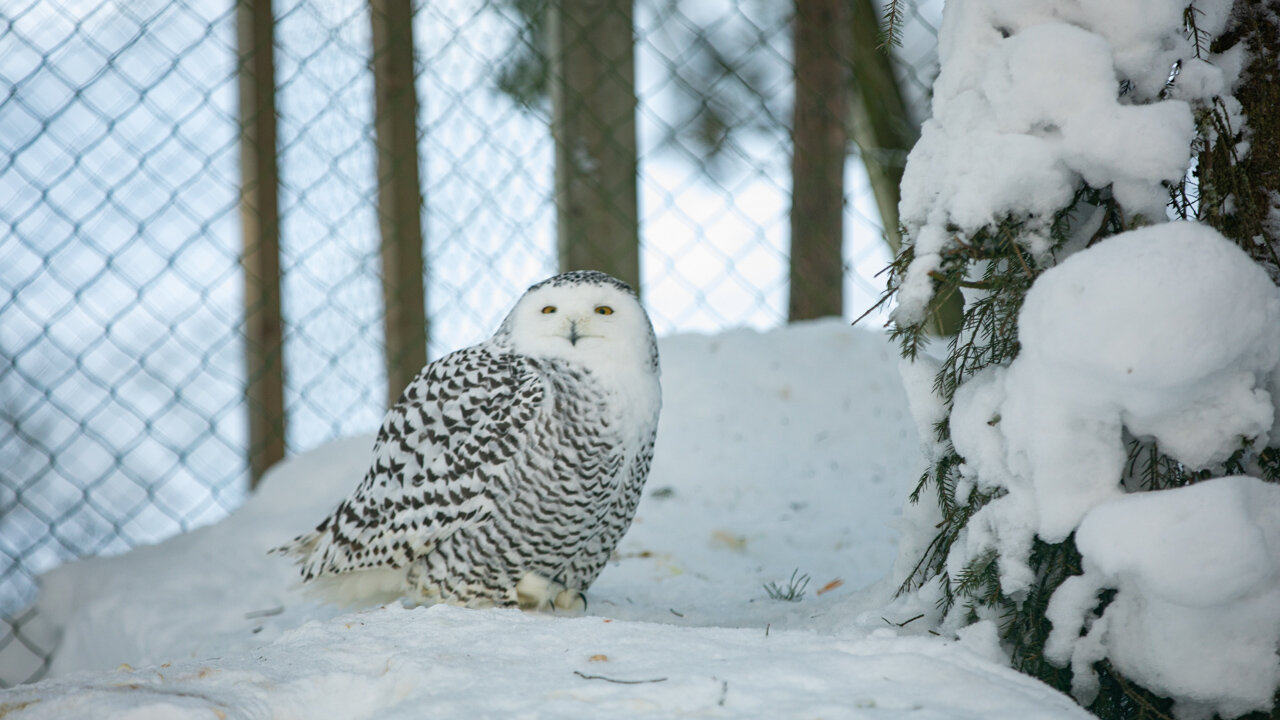
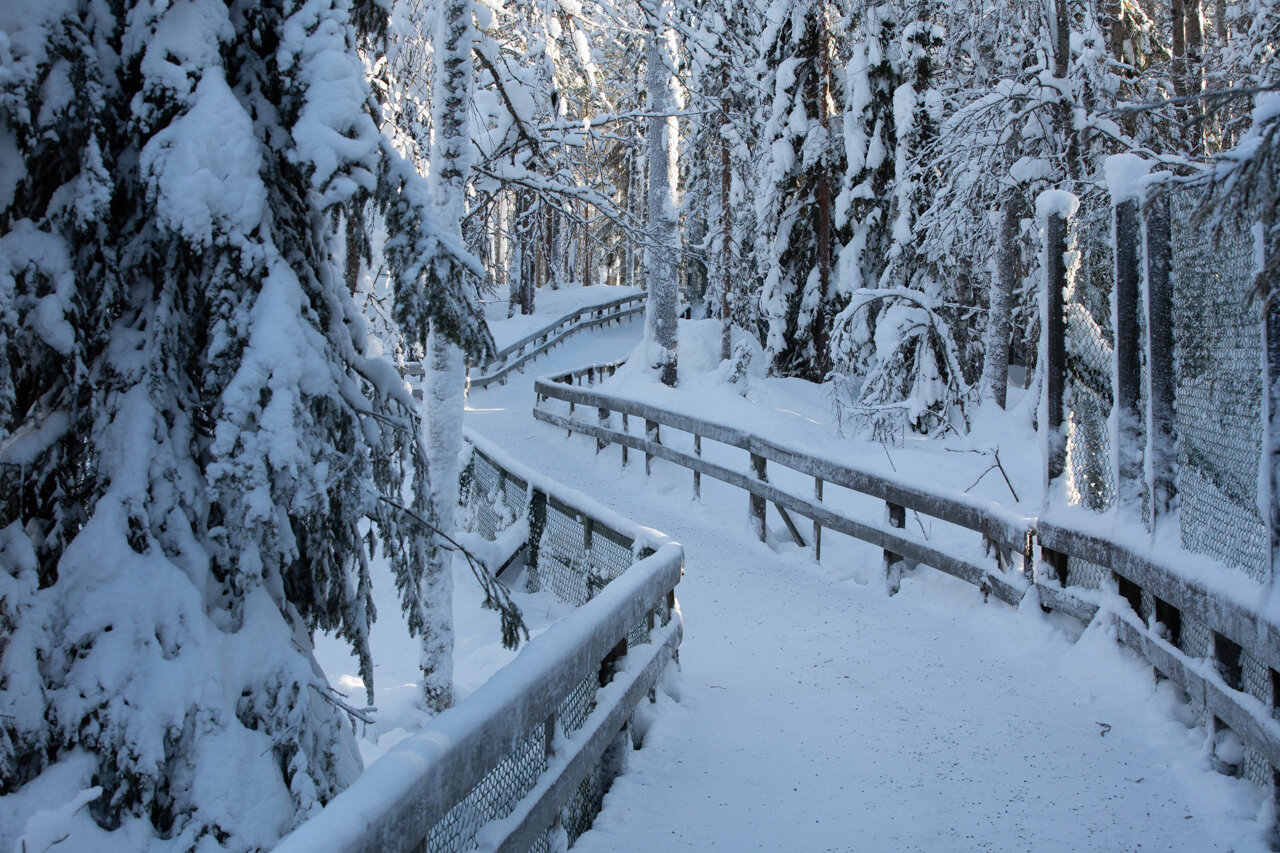
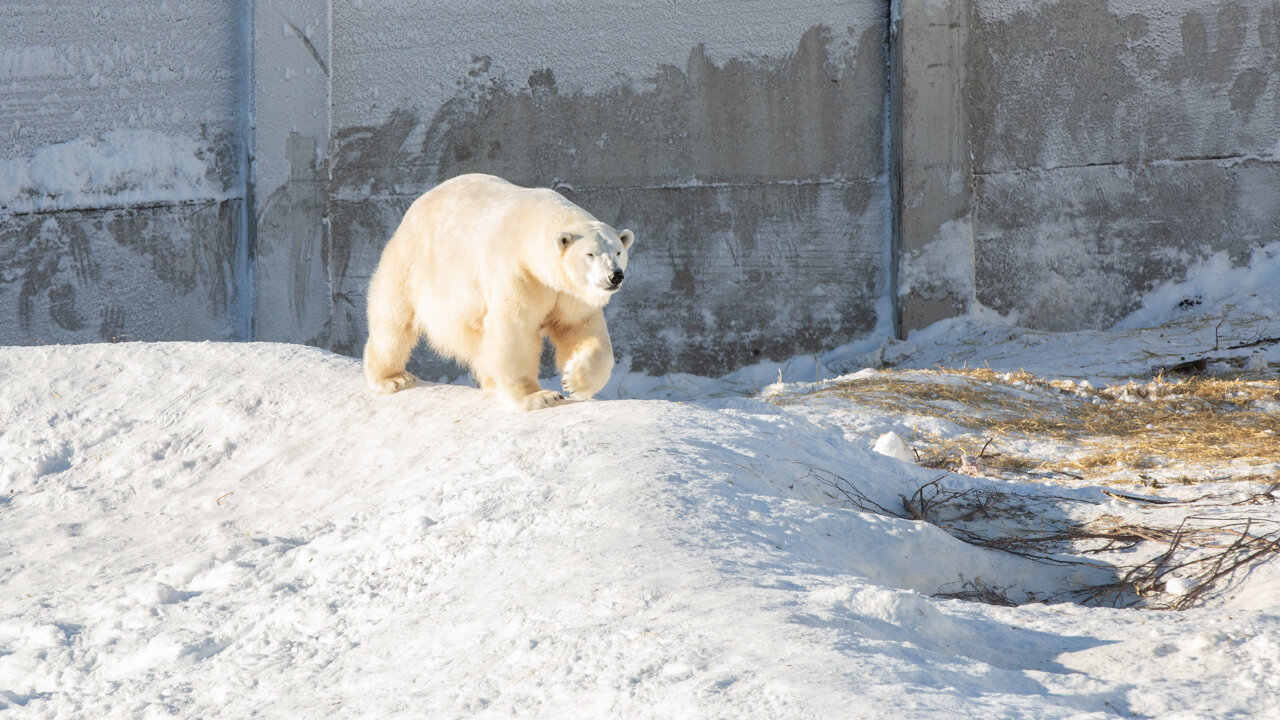
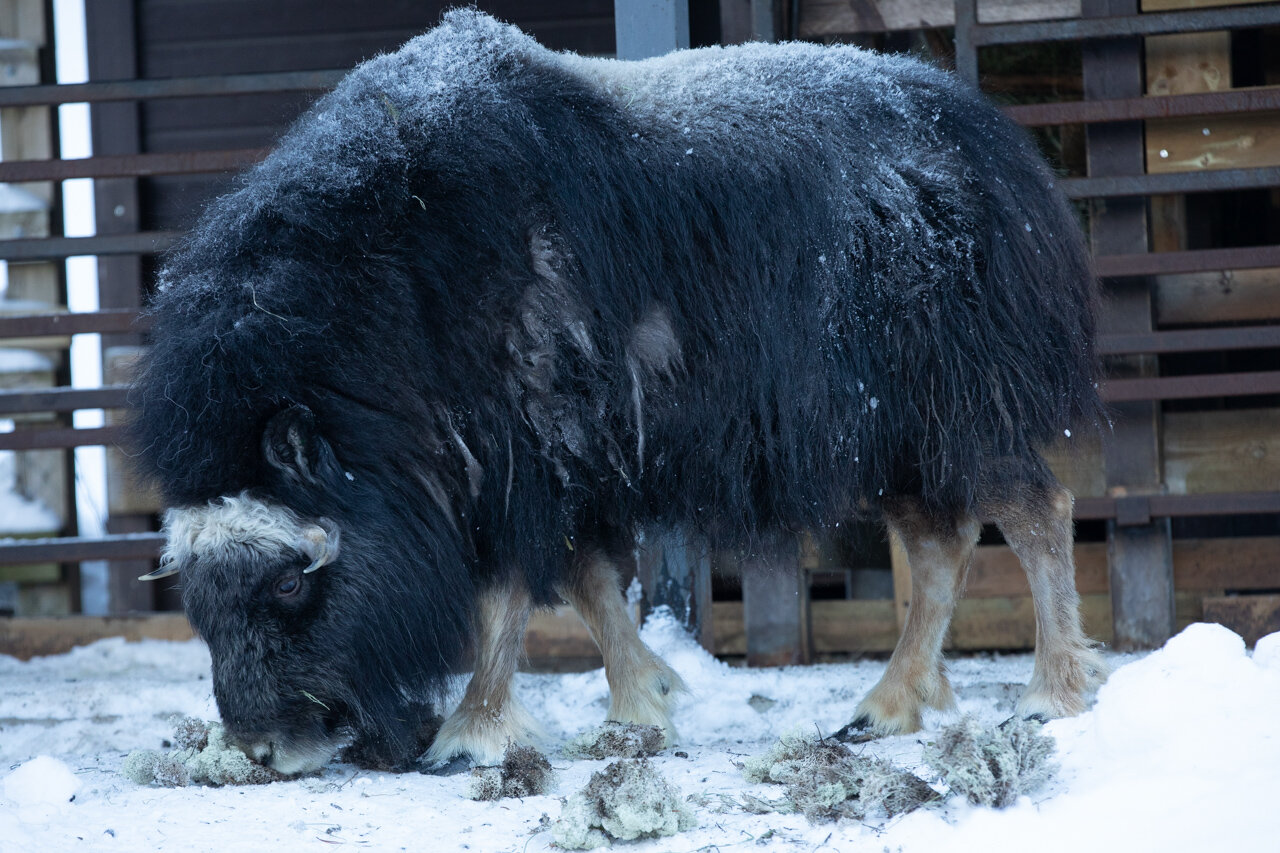
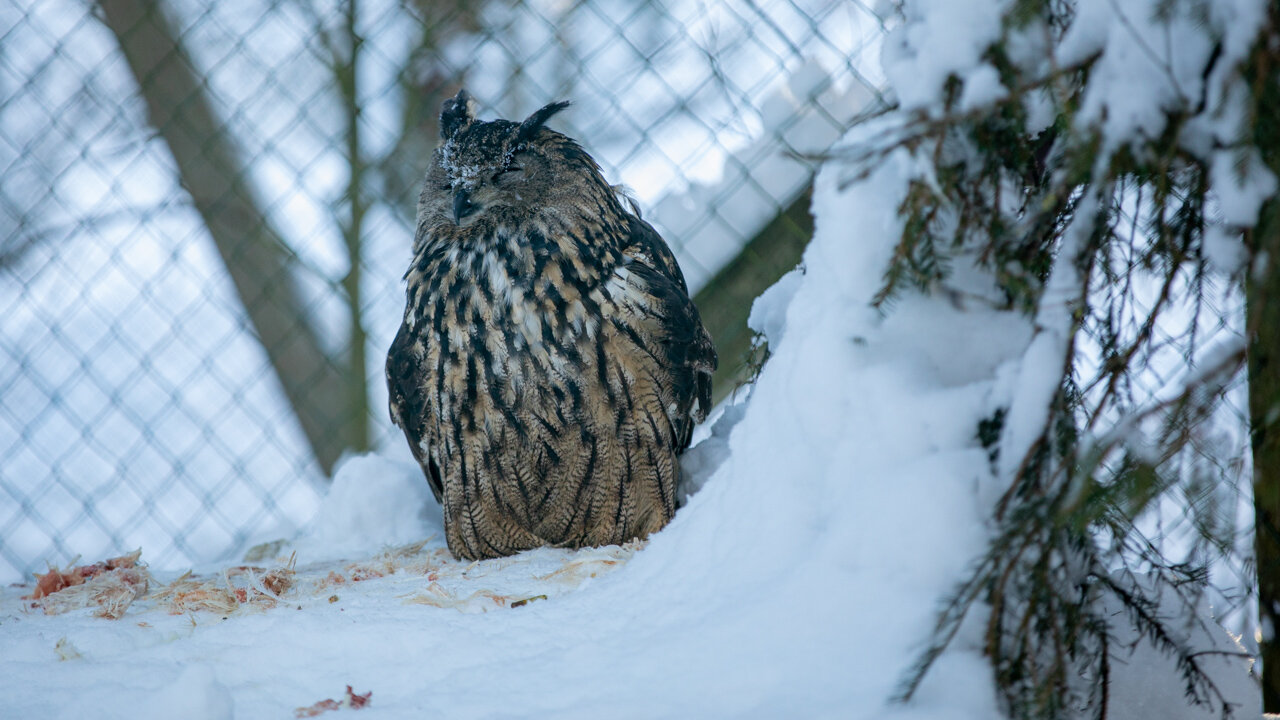

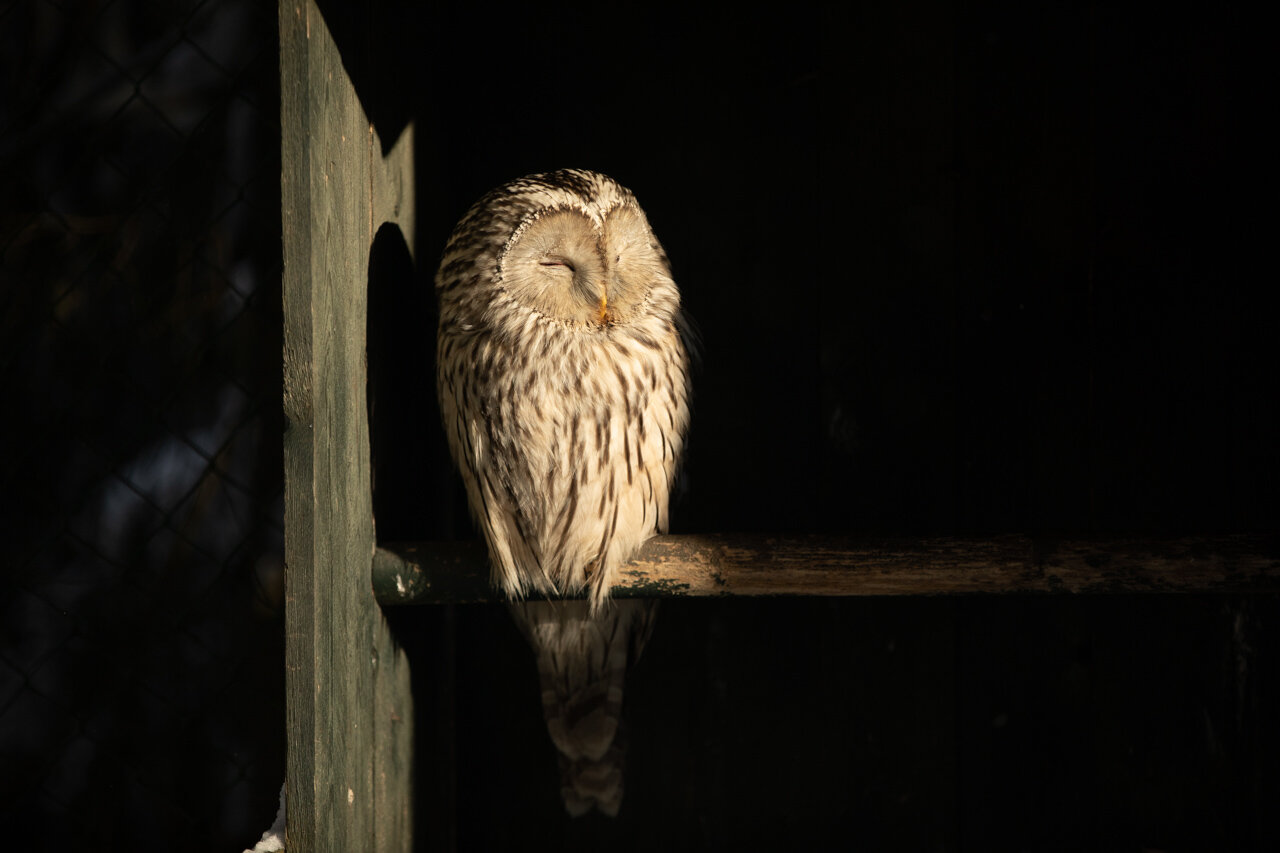
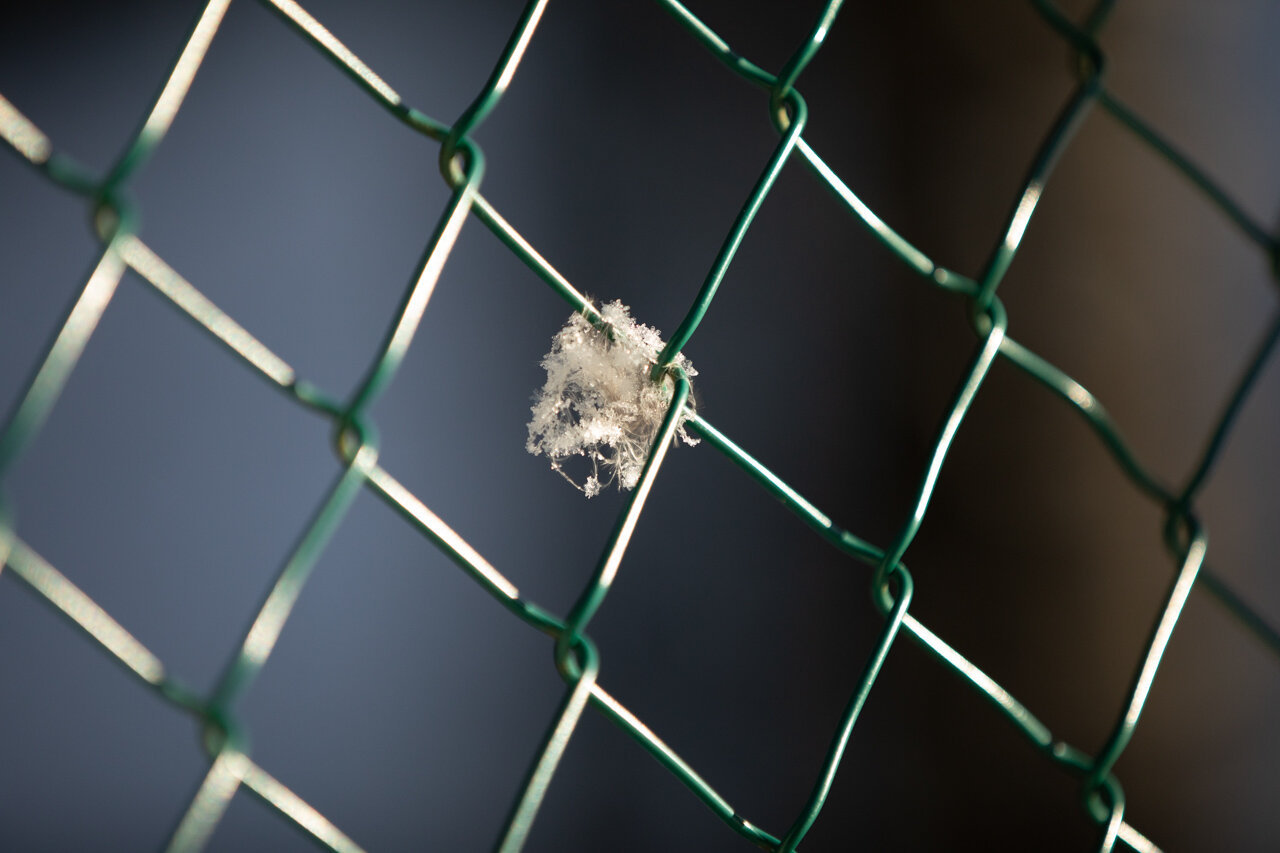

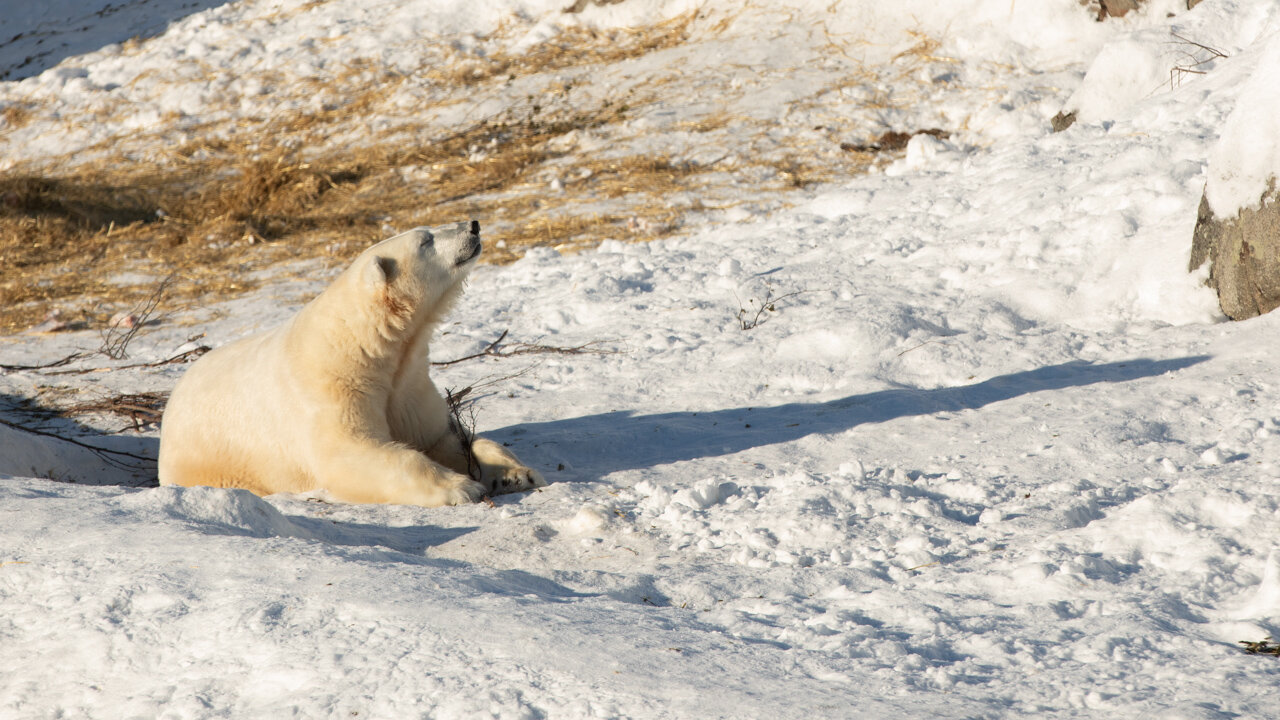

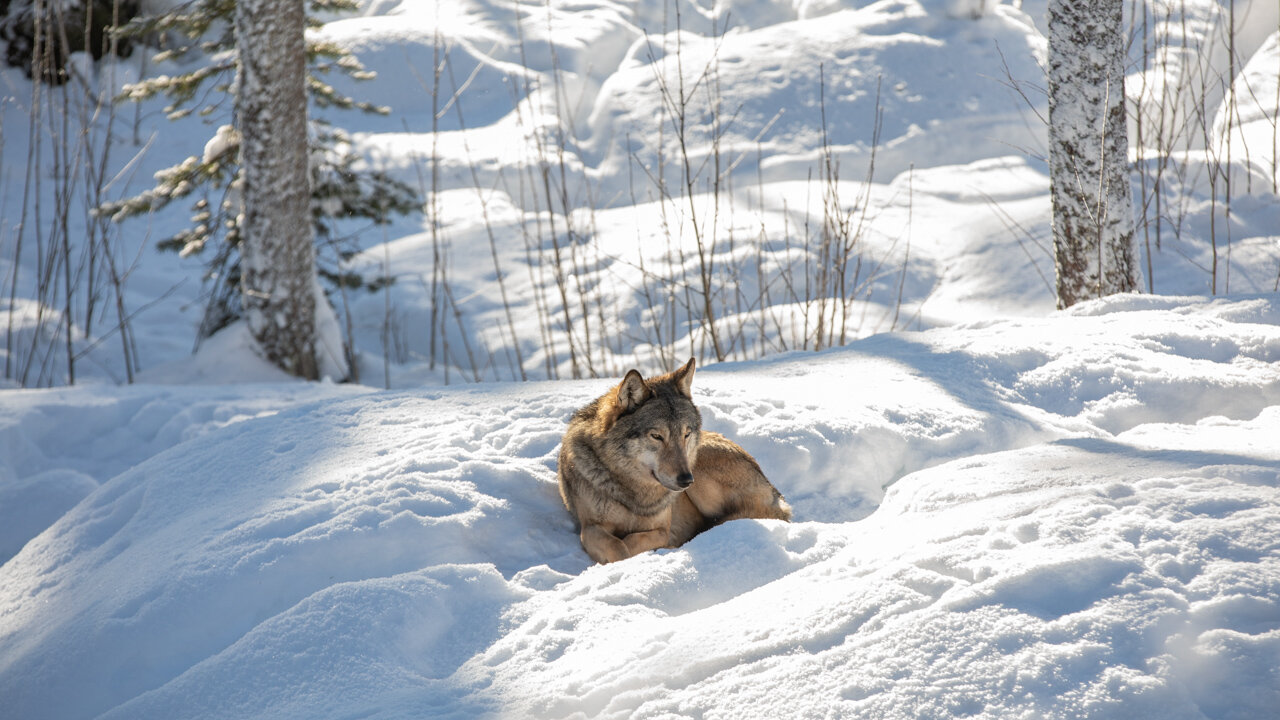
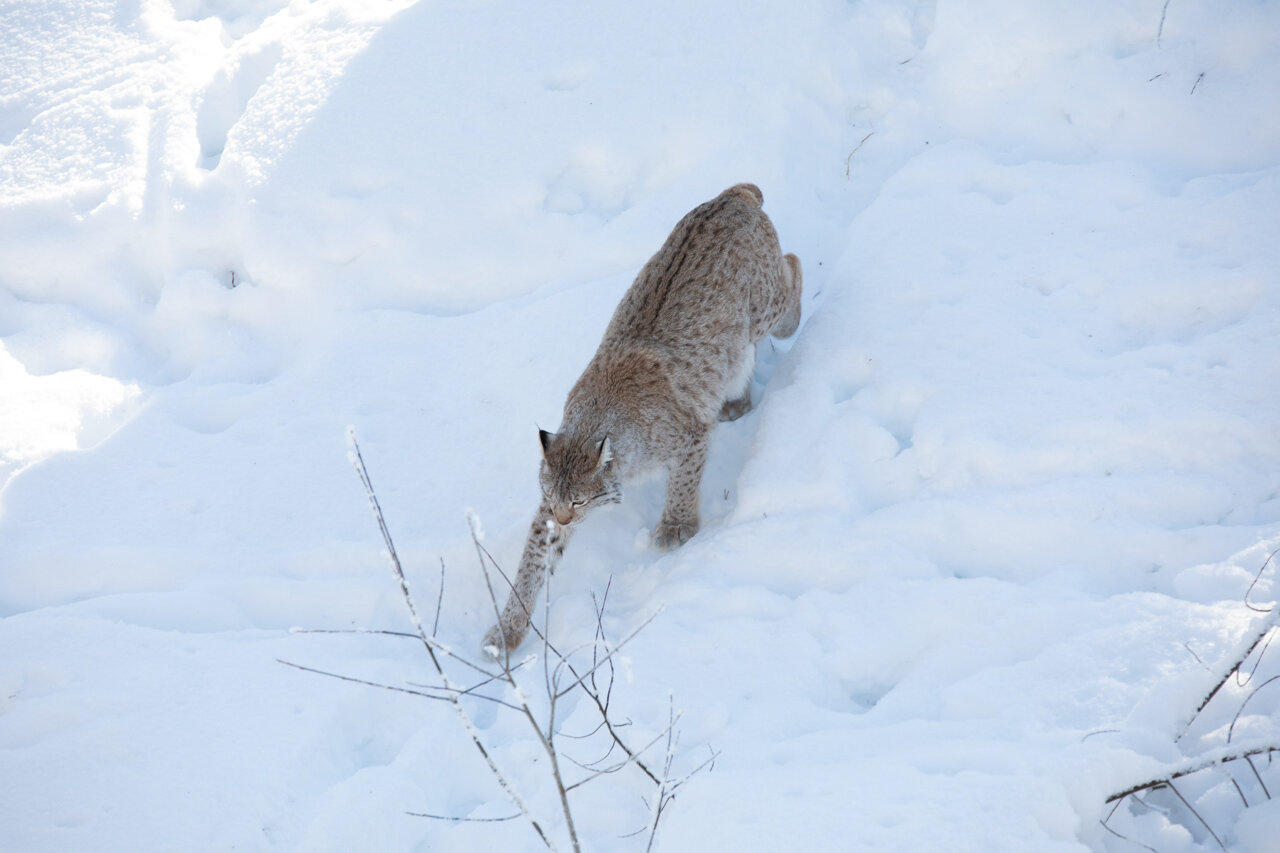
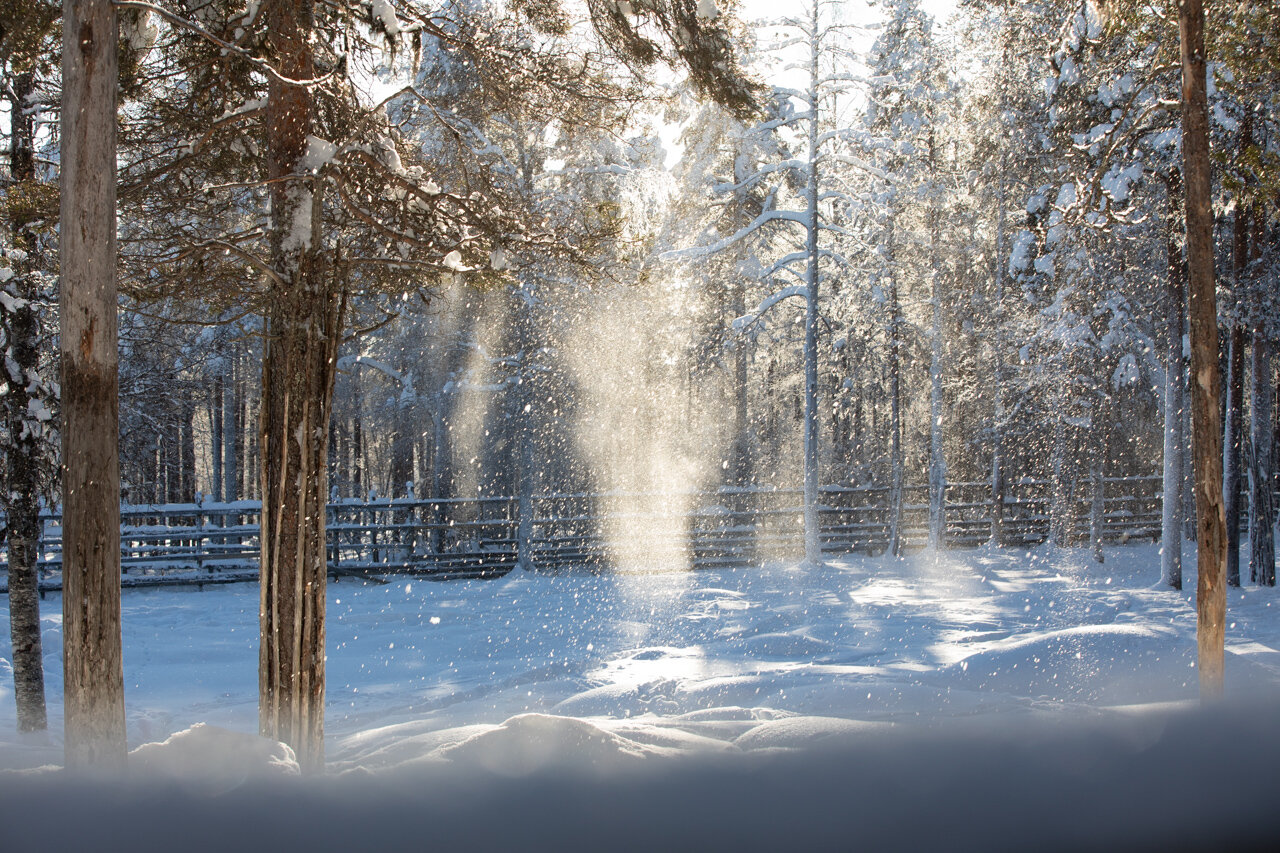
Day 5 - Day 9 Saariselka
Where to Stay at Saariselka
I stayed at the Lapland Hotels Reikonlinna in Saariselka Village. Centrally located short walk to ski slopes and winter walking trails and has a bus stop just in front of the property.
Other hotels in Saariselka that looked interesting are
Holiday Club Saariselka
Aparthotel Kuukkeli Aurora
Kakslauttenen Igloo Village deserves special mention.its a popular and expensive resort but is unique.
Day 3 - Ranua Wildlife Park
This is a great way to view Arctic Animals up close.Its a nice day trip from Rovaniemei and sure to be a hit with the kids while you practice your long lens shooting technique here. Birds of Prey, Polar Bears, Wolves, Wolverines, Red Fox, Reindeer and Musk Ox can all be seen here.
Day 4(Travel Day) Ravaniemi to Saariselka by Bus
Day 5 Exploring Saariselka Village and Kaunispaa
One can easily spend a day walking around Saariselka Village enjoying the crisp winter air and stop for a quick lunch and to warm up at the Cafe at the Supermarket. I recommend the PizzaS there. Visit Kaunispaa in the afternoon via the ski lift and take in the play of colours during golden hour all the way up to blue hour. The Ski lift only takes you up so you will have to find your own way down and back to the village either via the ski bus or call for a taxi from the cafe.
Day 6 Kiilopaa Fell Winter Walking Trail
This is a lovely winter activity destination which also offer some rustic accommodations for trekkers.This is also one of the starting points for the larger Urho Kekkonen Nature Park which offers multi day hikes.
The extensive wilderness areas of Urho Kekkonen National Park can be explored on skis in winter and on foot in other times. Hiking outside marked trails requires wilderness and orienteering skills, and in winter the thick snow adds an additional layer of difficulty. A map and compass are necessary, since GPS devices are not always reliable in the remote wilderness. Nights can be spent at any of the many wilderness and reservation huts in the park, which are stocked with firewood. The huts are located about a day's journey apart from each other.
Day 7 Aurorapolku Winter Walking Trail
The Aurorapolku trail is a short 2.1 km trail ideal that ls also the one of the starting points for the Urho Kekkonen Nature park mentioned above.
This takes us you to the Aurora Viewing Platform and Day Hut with a nice warm fire and restroom facilities.
Day 8 Exploring Saariselka
On the last full day at Saariselka I decided to just enjoy walking around the village again with camera in hand. Walked a different route into snow covered cabins and houses but kept to the main road so as not to trespass on the locals residences.
Day 9 Travel Day
Having had my fill of sub zero temperatures and with memory cards full of images it was time to head back to warmer climates.
My journey from -15C to +30 C started with a bus ride from Saariselka to Ivalo airport.
After a short flight to Helsinki I boarded my Finnair flight from Helsinki to New Delhi where the temperature was a moderate 18C.
Next I boarded a flight on good old Air India to Chennai which gave me a warm welcome at 30C.
Home Sweet Home?
And here I am writing this blog as I edit my images from my trip to winter wonderland.
working on my exhibit images now. Please sign up for my newsletter or watch my Facebook page to keep updated about the dates for the Exhibit . If you like this travel adventure please do share it with your friends.Hope it was useful and helps you plan your next winter adventure. Cheers!
Here area few useful links for planning your trip to Lapland
http://www.nationalparks.fi/en/urhokekkonennp/activities
Here are quick links to Amazon.in for gear that I either used for this trip or are on my own Wishlist based on my experience in the cold. Use this to browse and pick gear for your trip.
Spring Photography Guide to Grand Tetons and Yellowstone National Parks, USA - by Kamal Chilaka
Yellowstone and Jackson Hole National Parks have long attracted all types of people ranging from Native Americans , European Fur Trappers , Conservationists , Nature lovers and Photographers alike. They are right there on top of the list of National parks which provide great photo ops.
After they had been on my bucket list for a couple of years I finally decided to make the trip with a photography enthusiast friend from Boston.
Classic View of the Tetons from Schwabacher Landing, Grand Tetons
Yellowstone and Jackson Hole National Parks have long since attracted all types of people ranging from Native Americans , European Fur Trappers , Conservationists , Nature lovers and Photographers alike. They are right there on top of the list of National parks which provide great photo ops.
After they had been on my bucket list for a couple of years I finally decided to make the trip with a photographer friend from Boston.
Getting There and Getting Around
We flew to Jackson Hole from Boston via Denver. As we had decided to travel in late spring the tourist season had not officially begun as we wanted the park to ourselves and avoid the summer crowds. Other option is to fly to Salt Lake, Utah and drive from there.
Grand Tetons National Park Road
The views as you prepare for landing are just amazing. We were on a smaller commuter Jet from Denver to Jackson Hole which doesn’t allow for even have enough storage for a 26 L backpack and I ended up having to check it in at Gate.
I did manage to take my camera bodies and a couple of lenses in my hand and stowed them under the seat. Something to keep in mind while packing your gear for a trip to Yellowstone specially if you are flying on on the smaller jets.
At Jackson Hole Airport we picked up our rental car for the week a nice compact SUV which would be our ride for the duration of the trip.
Where to Stay at Jackson,WY
We stayed at the Rustic Inn Creekside during the first leg of our trip which was a 3 day stay at Jackson Hole. The inn had all the creature comforts one would need on such a trip. The rooms were spacious. The layout allows for easy access to the car park without too much walking from the rooms which were split level chalets. The lobby had hot coffee ready to take out early in the morning which is typically when photographers and adventure lovers like to head out to take in the best scenery . The Buffet breakfast was ample and was the perfect way to charge ourselves after a nice early morning shoot in the still chill Spring Air.
Jackson Hole has a wide selection of accommodations to choose from specially once the tourist season begins. During the shoulder season the options would be significantly lower.
Here are a few more options to choose from
Luxury
The Rusty Parrot Lodge and Spa
Budget
Jackson Hole and Grand Tetons Scenic Locations
Grand Tetons Park
While choosing which locations you want to visit within the park you have to decide on what your interest is. The choices would vary depending what you want to do be it back country camping or spotting wildlife or shooting scenery . Here i focus on my interest which is Landscape photography. Some of these locations would also be good for spotting buffalo , moose, and the occasional Coyote .
Mormon Row
The first afternoon were there we did a bit of exploring by driving around the area between Jackson and the airport. We had our first sighting of a Bull Buffalo just as we were turing in a bend in the road to Mormon Row. What was that? When you get up close to American Buffalo for the first time it hits you hard just how big and dangerous these animals are.
These are wild animals and you must maintain a minimum distance from them when you are observing them or trying to photograph them. To ignore that advice is putting yourself at peril as many over enthusiastic tourists have found out the hard way.
Mormon Row Scene at Sunrise
For our first full day of photography at Grand Tetons we had lined up the services of a local guide as we wanted to get quickly acquainted to the lay of the land in as short a time as possible. Our guide promptly picked us up before sunrise and took us to some of the spots mentioned here.
Schwabacher Landing
Not only did he take us to the best spots but also times that to coincide with when the light was optimum. We managed to get a few pics but planned to get back to the same locations again for shooting at dusk for a different mood.
Snake River Outlook ..The Spot for which Ansel Adams shot his iconic image
The Location from where Ansel Adams shot his iconic image of Snake River with the Tetons in the background is a look out point but the car park is further back now meaning one can’t really take the same image without the help of a drone.
Sunset at Jackson Lake
We had a half day to explore and shoot in and around Jackson before heading off to West Yellowstone in Montana for access to Yellowstone National Park through the west Entrance. The road from Grand Tetons to Yellowstone is closed till further in May . So we had to access Yellowstone via the west entrance .
Back country scene
Back country scene
Farmhouse in the backroads around Jackson,WY
We were able to capture scenes in the back roads around Jackson and also enroute to West Yellowstone.
Horses and Cattle at a farm
Yellowstone National Park
The Yellow coloured Rock that gives the park its name
On day 3 after a morning photo outing at the Tetons we checked out of the hotel and started driving towards West Yellowstone through the rolling meadows of Idaho with a ceiling of puffy white clouds against a backdrop of big blue sky we reached our Hotel in the evening and rested for the night.
Driving through Idaho to West Yellowstone
Where to Stay at West Yellowstone
We stayed at the Kelly Inn West Yellowstone a nice premium inn just a short distance from the West Entrance to Yellowstone Park and also 5 minute walk from the Grizzly and Wolf Discovery Center.
Other Stay Options
Luxury
Explorer Cabins at Yellowstone
WorldMark West Yellowstone
Budget
Evergreen Motel
Moose Creek Inn
We had a surprise snowfall our first morning in West Yellowstone. The Landscape had changed overnight. There was a nice blanket of snow covering everything which made our first drive into Yellowstone magical. We had gotten a taste of winter when we were not expecting it.
After a late Spring Snowfall
At Yellowstone just after a snowfall
Waterfall at Yellowstone
Yellowstone National photo Locations
On our first day we decided to explore the valleys and wildlife and waterfalls of Yellowstone.
Lamar Valley
Lamar Valley
This wide, expansive valley is home to bison, elk, coyote, grizzly and wolf, and is must visit area for serious wildlife watchers. Bison and elk are readily visible, and coyotes can oftentimes be spotted.
Buffalo near Lamar Valley
Visitors who are willing to rise early in the morning or wait up until dusk also may have the opportunity to see bears and wolves. In fact, Lamar Valley is the no 1 destination for viewing wolves. There are also abundant fishing opportunities in the Lamar Valley.
American Wild Buffalo at Yellowstone
Yellowstone Falls
Yellowstone Falls
How to Get There
The Lower Falls area is located just to the east of Canyon Village. A one-way loop drive takes you to the brink of the Grand Canyon and offers four views, with the last stop at the trail that leads to the top of the Falls.
Brief Description
Lower Falls, the biggest waterfall in Yellowstone, is the most famous in the Park, hands down. In fact, the 308-foot tall waterfall it is most likely the second most photographed spot in Yellowstone, with Old Faithful Geyser being the first. There are numerous views of the Falls from both the east (Inspiration Point, Grandview Point and Lookout Point) and west (Artists Point) sides of the Grand Canyon, most of which require only a short walk or virtually no walk to see. The trail to the top of the Falls (3/4 of a mile roundtrip, but steep with many switchbacks) is a must, as the experience of standing atop the Falls is one of the most breath-taking experiences in the entire Park.
Inspiration Point
Inspiration Point is a promontory cliff on the north rim of the Grand Canyon of the Yellowstone east of Yellowstone Falls on the Yellowstone River in Yellowstone National Park. The point was originally named Promontory Point in 1878 by W. H. Holmes but later given the name of Inspiration Point by G.L. Henderson, a park concessionaire in 1887. The point is a natural observation point over the rim of the Grand Canyon of the Yellowstone.
Grand Canyon of Yellowstone
Waterfall in yellowstone
The Geothermal Attractions of Yellowstone
On day 2 we decided to cover the more photogenic Geysers. Yellowstone National Park’s thermal features can be seen as the product of millions of years of geology at work. Much of Yellowstone sits inside an ancient volcanic caldera (the exploded crater of a volcano).
Old Faithful shooting steam into the Sky
The last major caldera forming eruption occurred 600,000 years ago. For hundreds of thousands of years following that, subsequent lava flows slowly filled in most of the caldera. Even now, in some places, nearly molten rock resides as little as 2-5 miles below the surface. Heat from the volcanic activity makes its presence known by heating ground water and creating the thermal features we now see.
The four basic types of thermal features present in the Park are geysers, hot springs, fumaroles, and mudpots. Many of these are concentrated in Yellowstone’s major geyser basins: Upper, Midway, Lower, Norris, West Thumb, Shoshone and Heart Lake.
Old Faithful entertaining tourists
Geysers are hot springs that erupt periodically. The eruptions is the result of super-heated water below-ground becoming trapped in channels leading to the surface. The hottest temperatures are at the bottom of these channels (nearer the hot rock that heats the water) but the deep water cannot vaporize because of the weight of the water above. Instead, steam is sent upwards in bubbles, collecting in the channel’s tight spots until they essentially become clogged, leading to a point where the confined bubbles actually lift the water above, causing the geyser to overflow.
Cliff Geyser Erupting
This causes the pressure to decrease until suddenly violent boiling occurs throughout much the length of the column, producing a tremendous volume of steam which forces the water out of the vent in a superheated mass. This is an eruption. As the eruption continues, the heat and pressure gradually decrease, and the eruption stops when the water reservoir is depleted or the steam runs out. The two types of geysers are fountain geysers (which shoot water out in various directions through a pool) and cone geysers (which shoot water out in a fairly narrow jet, usually from a cone-like formation).
Emerald Pool
Chromatic Pool hot spring in the Black Sand Geyser Basin in Yellowstone National Park
Hot Springs are similar to geysers, but their underground channels are large enough to allow rapid circulation of water. Rising hot water releases heat energy by evaporation or hot water runoff, while convection currents return the cooler water to the underground system, thus maintaining equilibrium.
Grand Prismatic Spring, Yellowstone
The microorganisms which live in and around the hot springs often make the pools very colorful.
Fumaroles are holes or vents from which steam rushes into the air. It is like a hot spring, but lacks liquid water. Either there isn’t enough water or the underground rock is too hot and boils off all of the water so a pool can’t form. The small amount of water that does seep into the area is converted to steam and expelled from the vent, oftentimes creating a hissing noise.
Pink Geyser
Mudpots are thermal areas where water-saturated sediment (similar to clay) is affected by super-heated steam below. Rising steam forces its way upwards through the mud and ground water, bursting upwards sending showers of mud into the air, as if in a small explosion.
Buffalo grazing near Steam Vents, Yellowstone
Steam Vents are cracks in the surface of the ground through which pressurized steam from below escapes to the surface, oftentimes with a hissing sound.
Mammoth Hot Springs
Mammoth Hot Springs are a surficial expression of the deep volcanic forces at work in Yellowstone. Although these springs lie outside the caldera boundary, scientists surmise that the heat from the hot springs comes from the same magmatic system that fuels other Yellowstone thermal areas.
A large fault system runs between Norris Geyser Basin and Mammoth, which may allow thermal water to flow between the two. Also, multiple basalt eruptions have occurred in this area. Thus, basalt may be a heat source for the Mammoth area.
Mammoth Hot Springs, Yellowstone
Thermal activity here is extensive both over time and distance. Terrace Mountain, northwest of Golden Gate, has a thick cap of travertine. The Mammoth Terraces extend all the way from the hillside where we see them today, across the Parade Ground, and down to Boiling River.
Patterns in the Geothermal waters of Mammoth Hot Springs
After 6 days of break taking views and enjoyable photography it was time to head back to Jackson and catch a flight home.
Tips for Travel to Grand Tetons and Yellowstone National Parks
What was in my Camera Bag and what did I end up using
This screenshot from Lightroom shows what gear I used for the trip…
My tripod was moderately used specially for the Landscapes near Jackson and Grand Tetons and the Views of Yellowstone Falls and Grand Canyon of Yellowstone. For the rest I choose to remain fluid and agile and shoot at higher shutter speeds to counter shake.
Clothing for Spring Weather
Pack Layers and a good lightweight and waterproof jacket. Definitely carry a good pair of photography gloves. The temperatures can dip low making it difficult to handle the camera and tripod without gloves.
If you plan to hike carry a good comfortable pair of hiking boots.
Safety
Both parks are Bear Country and it advisable to carry Bear Spray with you. This can be purchased in gas stations and convenience stores at Jackson or West Yellowstone. Handle with care.
These are large parks and mobile phone coverage is weak or not available except in some areas.
Travel with a friend or as a group but if you have to travel alone let people know where you will be.
I had a great time photographing at these locations and definitely plan to head back there sometime. Possibly in Winter to experience and capture a different perspective.
Order Prints of select Images from Grand Tetons and Yellowstone here
Buy Stock images from Grand Tetons and Yellowstone here
Source References
Wikipedia
Yellowstone.net





